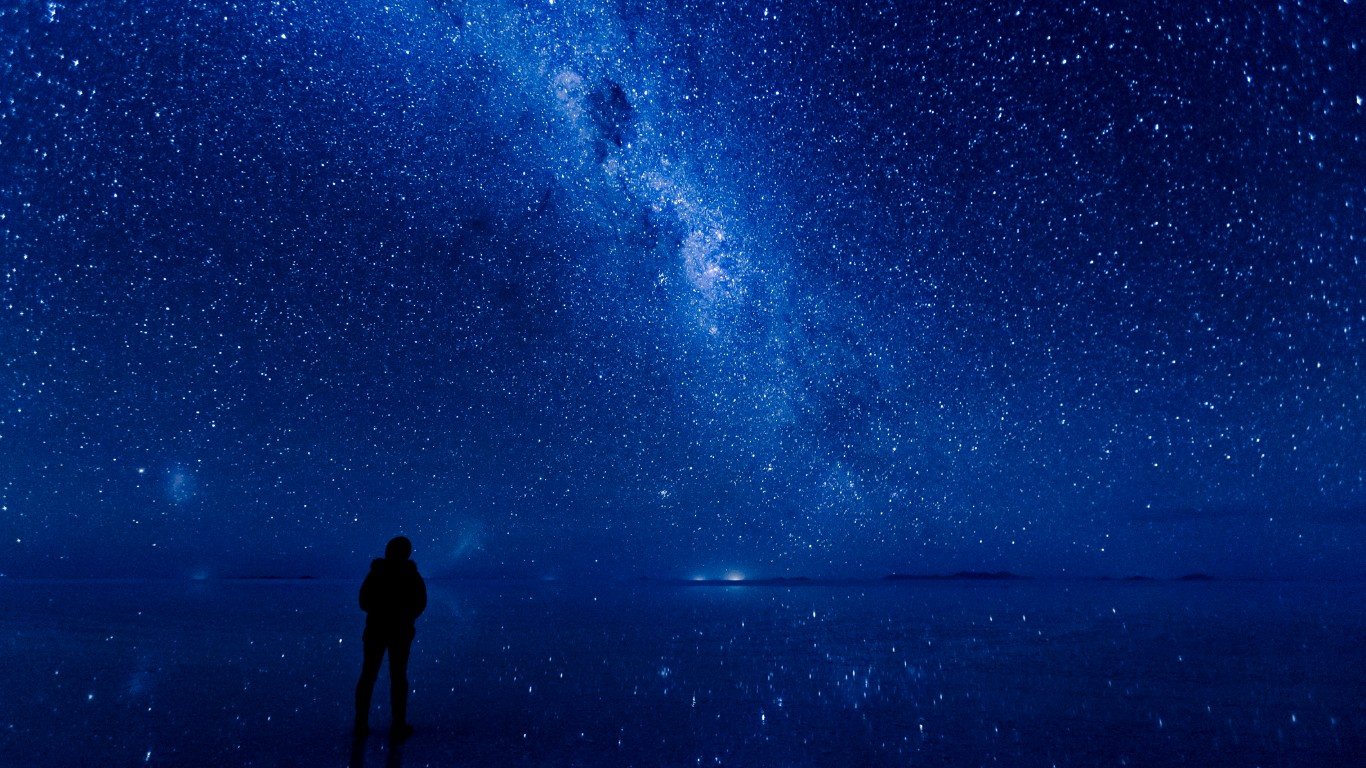
The natural world has always inspired awe. Fire shooting from the ground, lights blazing across the sky, and glowing ocean waves were fodder for the imaginations of ancient people, inspiring myths and legends of gods and otherworldly powers. Though science may now be able to explain the geological forces behind some of the earth’s most dramatic landscapes, that doesn’t make them any less magical.
Click here to read 50 natural wonders you must see to believe.
24/7 Tempo compiled 50 natural wonders that you must see to believe. Some are UNESCO World Heritage Sites, and most were nominees for New 7 Wonders of Nature, a 2007 initiative with a global poll that attracted over 100 million votes. If you are looking for a local perspective, these are the most beautiful attractions in the U.S.
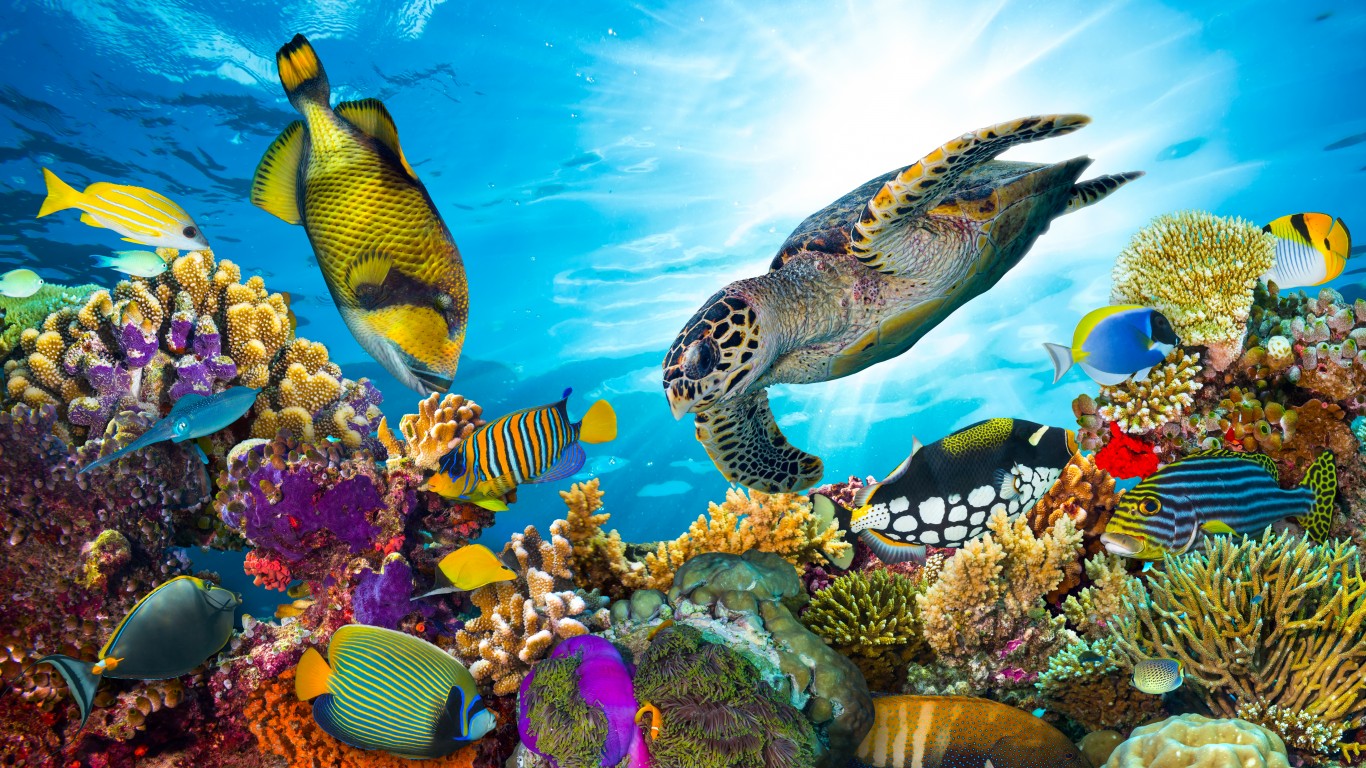
1. Great Barrier Reef
> Location: Australia
Off the north-east coast of Australia, the world’s largest coral reef ecosystem is home to over 4,000 species of mollusks, 1,500 species of fish, and a diverse array of anemones, sponges, crustaceans, sea turtles, and dolphins. Though most of the site is protected against development and over-fishing, the climate crisis continues to threaten this delicate ecosystem.
[in-text-ad]

2. Salar de Uyuni
> Location: Bolivia
The world’s largest salt flat in southwest Bolivia, which spans over 4,000 miles, can be bitterly cold, as it’s 12,000 feet above sea level. The site is most famous for its mirror effect, when in the rainy season it is transformed into a shallow lake that perfectly reflects the sky all the way to the horizon.
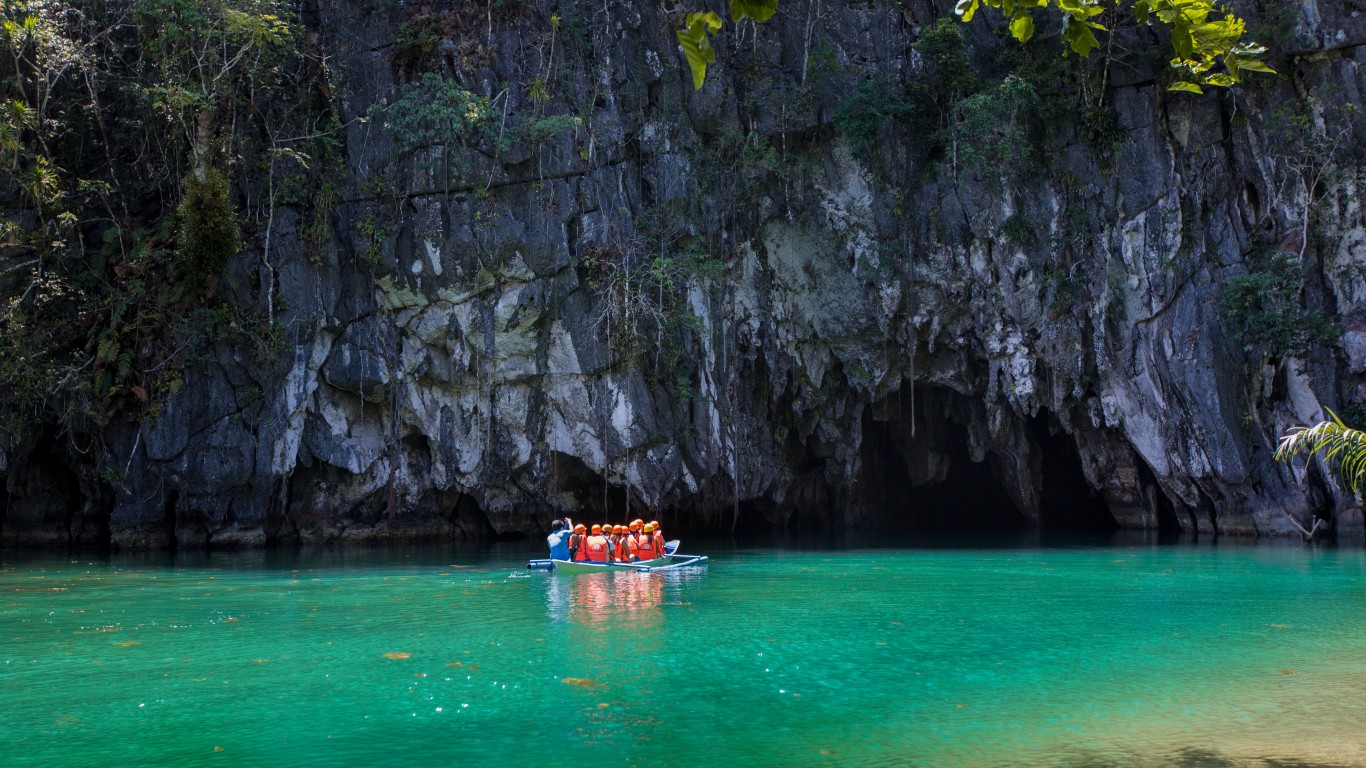
3. Puerto Princesa Underground River
> Location: Philippines
This National Park on the island of Palawan contains a river that runs 5 miles underground through a series of limestone caves, connecting a lake to the ocean. The above-ground portion of the park features intact old-growth forest.
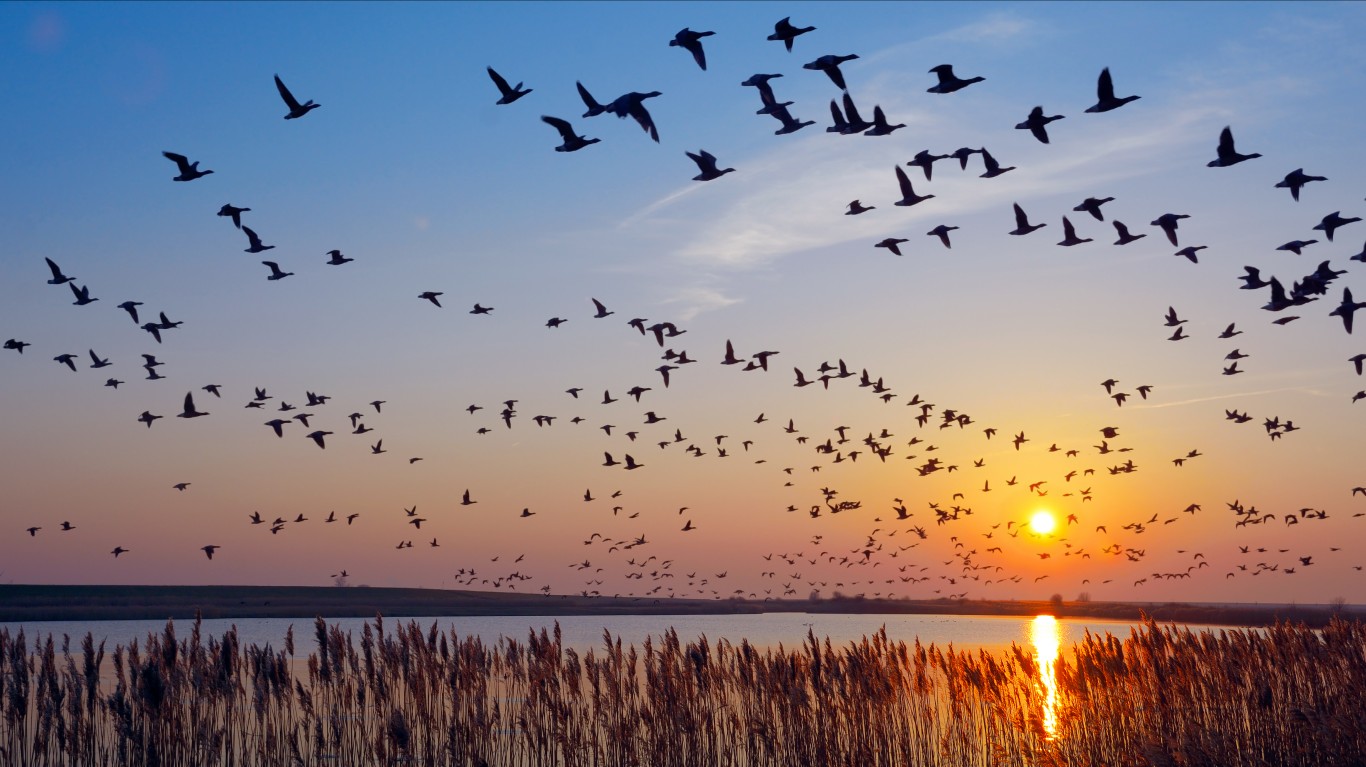
4. Wadden Sea
> Location: the Netherlands, Germany, Denmark
Spanning over 300 miles of coast from the Netherlands to Germany and Denmark, the Wadden Sea is the largest uninterrupted intertidal zone in the world. Delicate tidal ecosystems thrive along this coast, which is comprised of mud flats, sandbars, marshes, and dunes. It is a crucial site for many African-Eurasian migratory birds.
[in-text-ad-2]
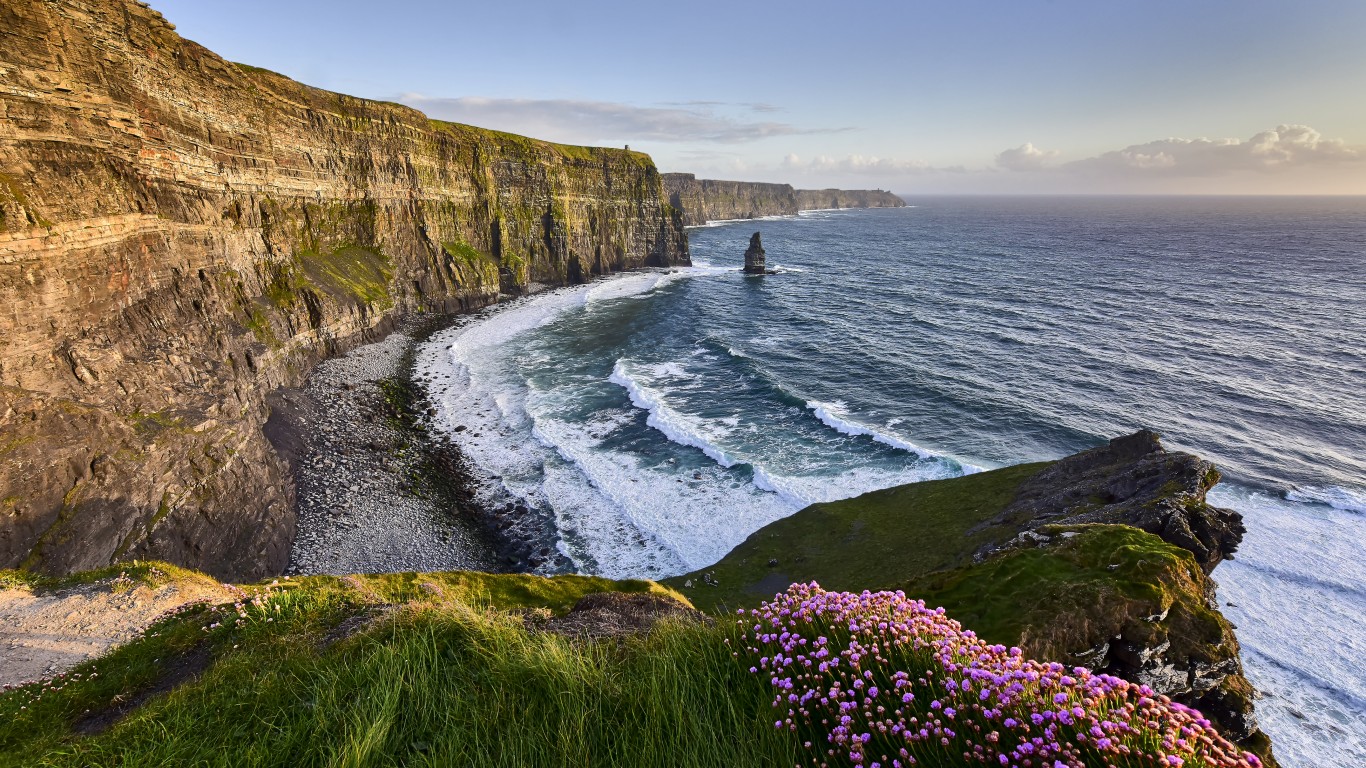
5. Cliffs of Moher
> Location: Ireland
Towering up to 700 feet over the ocean, the Cliffs of Moher run for five miles down the west coast of Ireland. Thousands of puffins nest on the limestone cliffs, which attract over a million visitors yearly.
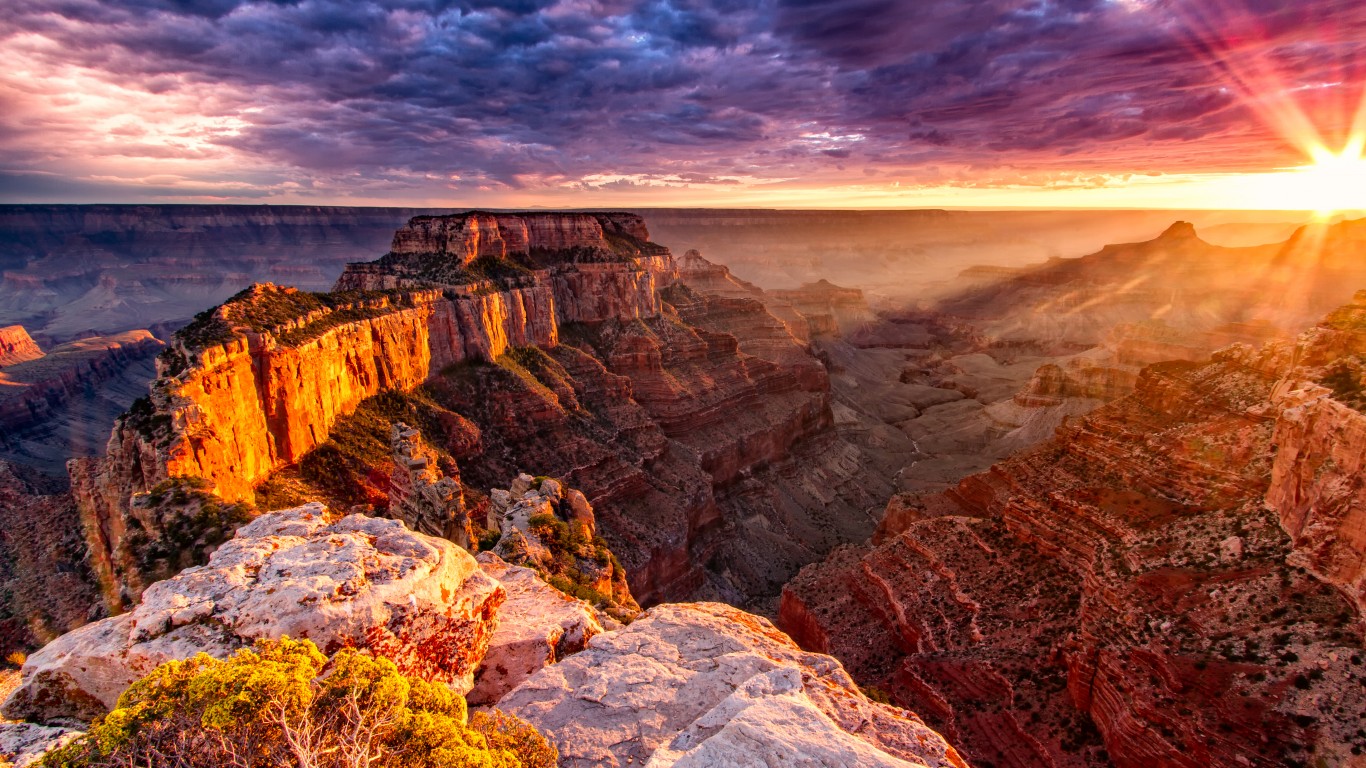
6. Grand Canyon
> Location: Arizona
Formed over 6 million years as the Colorado River ate into its banks, the Grand Canyon in Arizona is now a mile deep and 277 winding river-miles long. The eroded walls are a geologic masterpiece, made up of almost 40 distinct, colorful layers of rock including limestone, shale, and sandstone.
[in-text-ad]
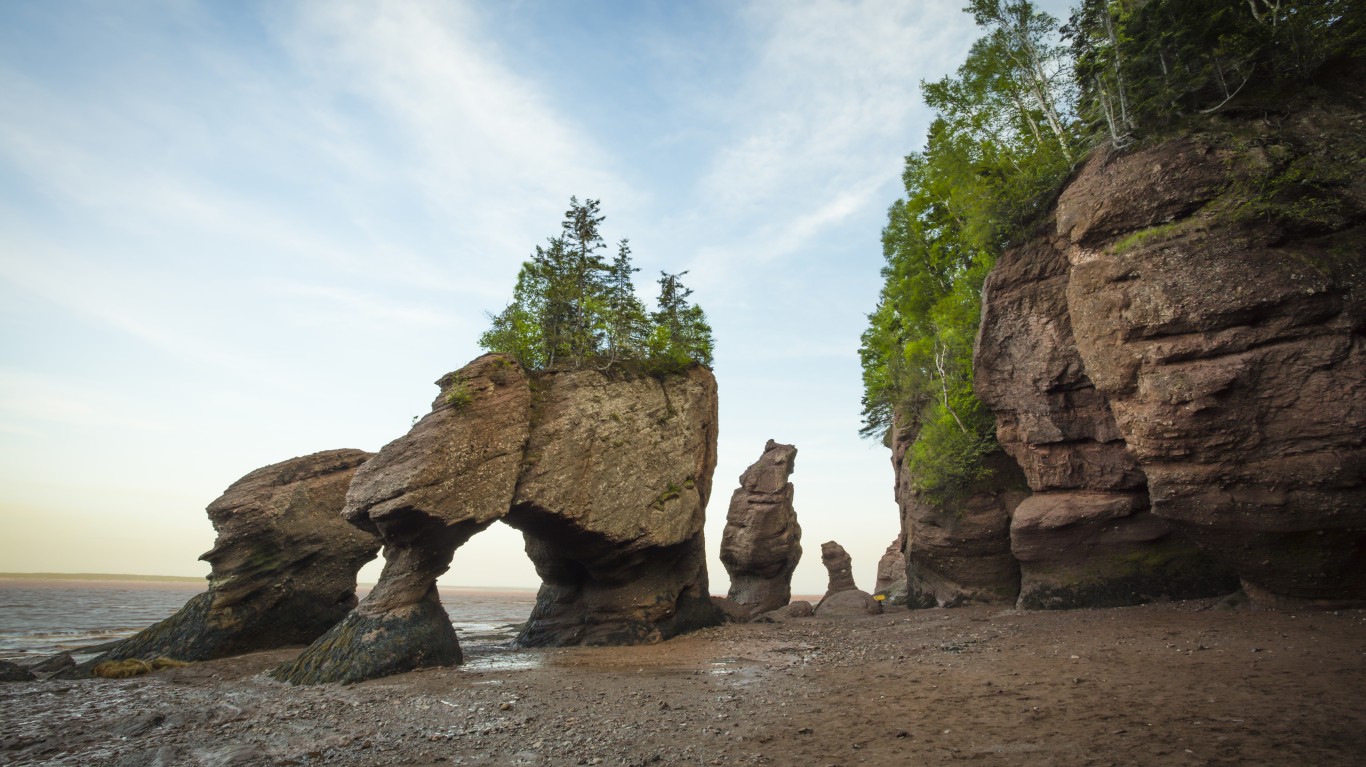
7. The Bay of Fundy
> Location: Canada
Between Nova Scotia and New Brunswick, the Bay of Fundy’s dramatic tides, which can rise and fall almost 50 feet in a day, reveal naturally carved boulder formations in the tidal zones offshore. Migrating sandpipers and miles of cliffs also draw visitors to this Canadian wonder.

8. Zhangjiajie
> Location: China
The striking, vertical peaks in Zhangjiajie, China — aside from having inspired the floating mountains in the movie “Avatar” — are rife with mind-blowing attractions, including a 4,700 foot glass-bottomed skywalk, stairs that lead to the “gateway to heaven,” and a 900-foot-high glass bridge suspended between sandstone cliffs.
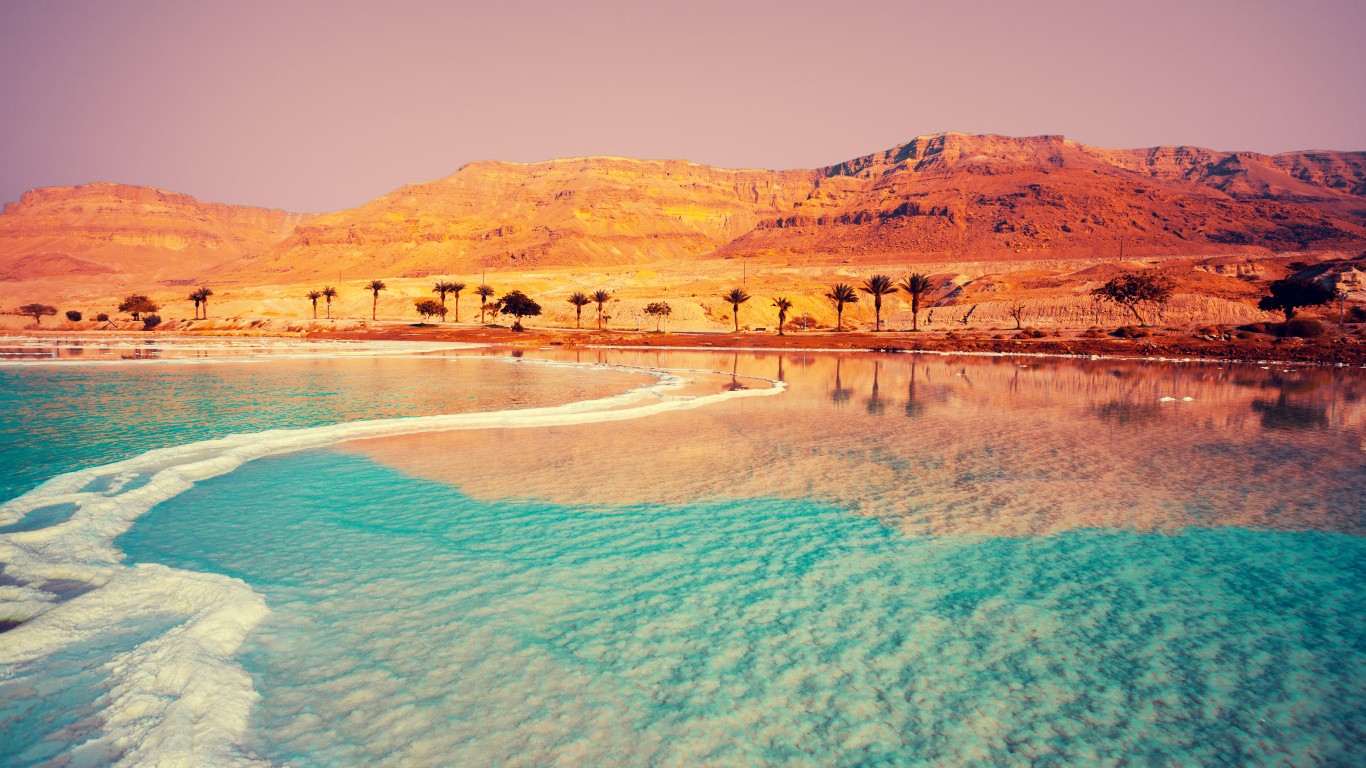
9. The Dead Sea
> Location: Jordan and Israel
This massive salt lake has the lowest elevation of any body of water on earth. Situated in the middle of a desert, the lake’s waters are so saline that nothing but bacteria can survive in them, hence the name. The saline waters are famous for being so dense that they keep swimmers afloat.
[in-text-ad-2]
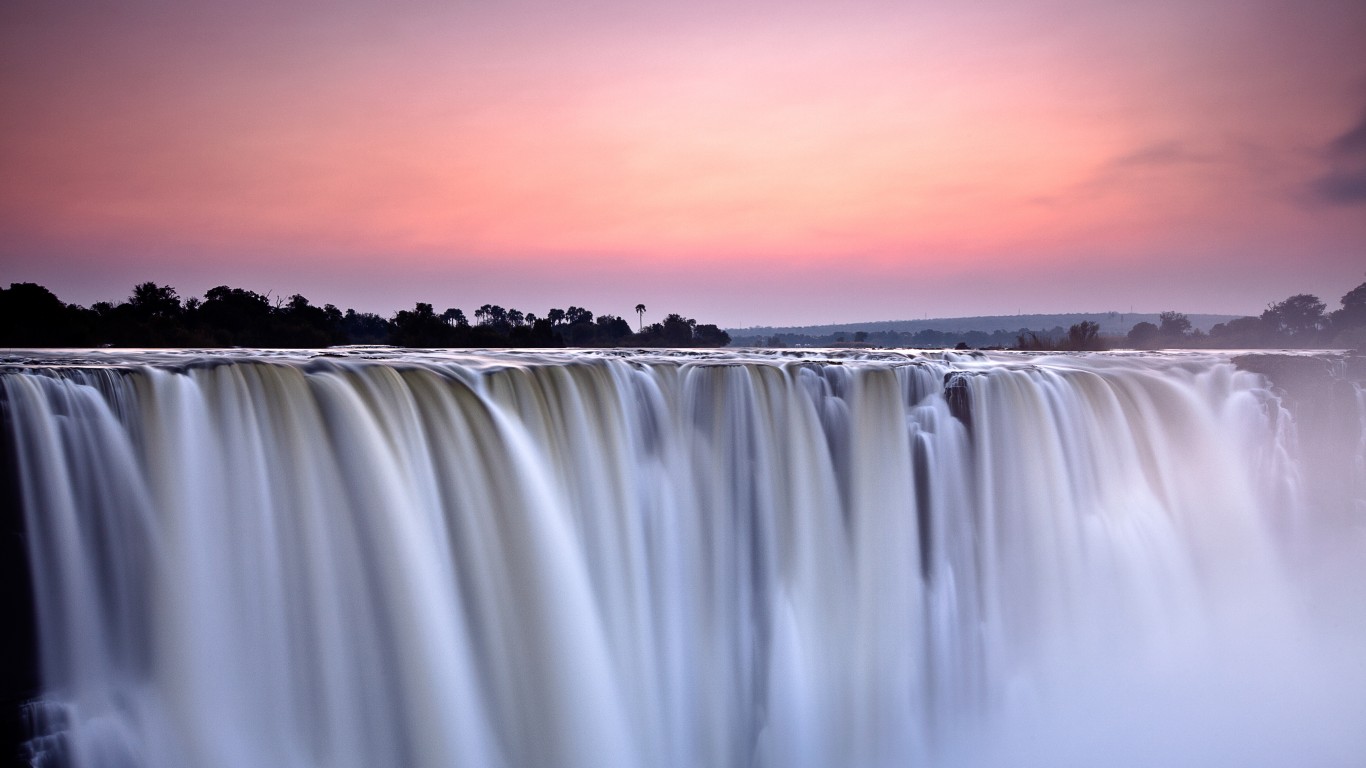
10. Victoria Falls
> Location: Zimbabwe and Zambia
This massive waterfall on the Zambezi River is twice as wide and deep as Niagara Falls. Spanning over 5,000 feet, the falls drop into a chasm formed by the cliff they descend and another rock face opposite the falls.
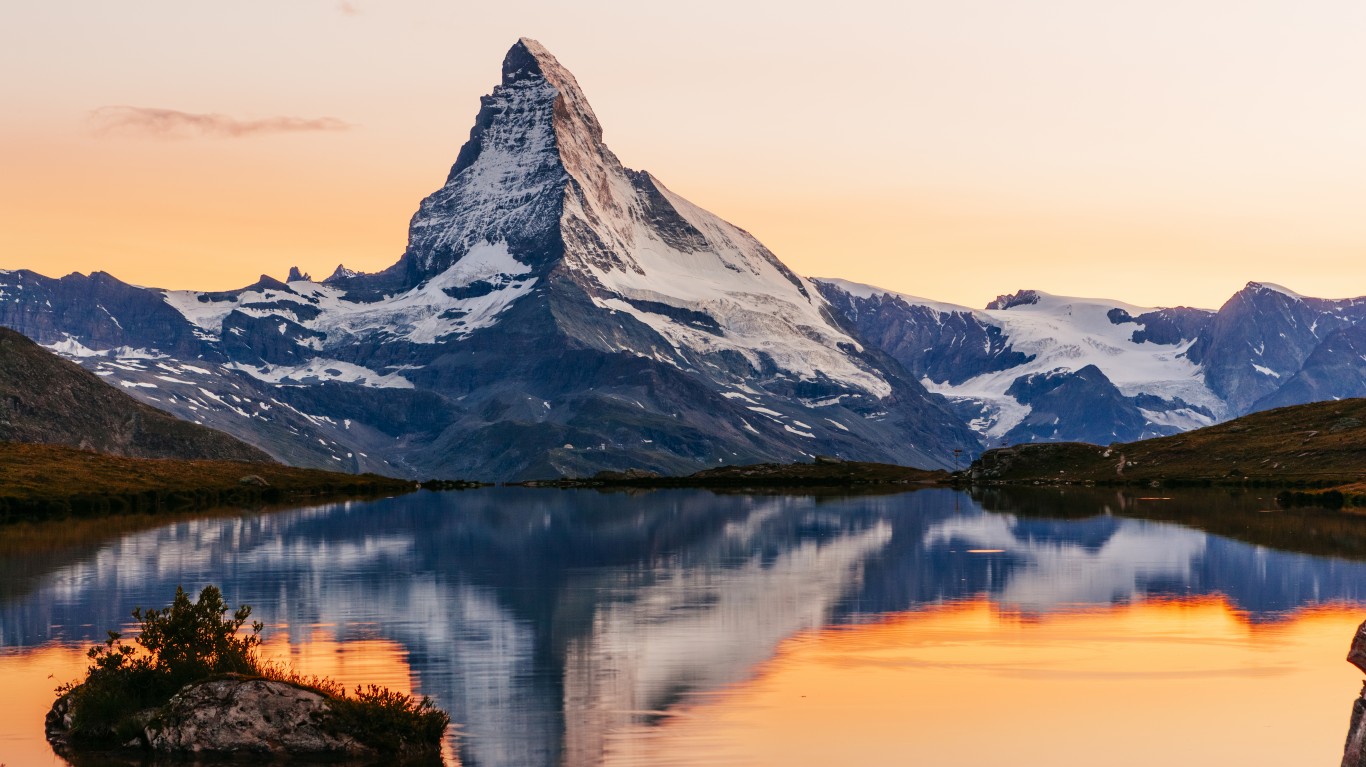
11. The Matterhorn
> Location: Switzerland
This iconic peak that lies on the border of Switzerland and Italy is 14,692 feet high and perhaps the most famous mountain in the Alps. Hundreds of mountaineers have met their deaths attempting to scale the steep summit.
[in-text-ad]
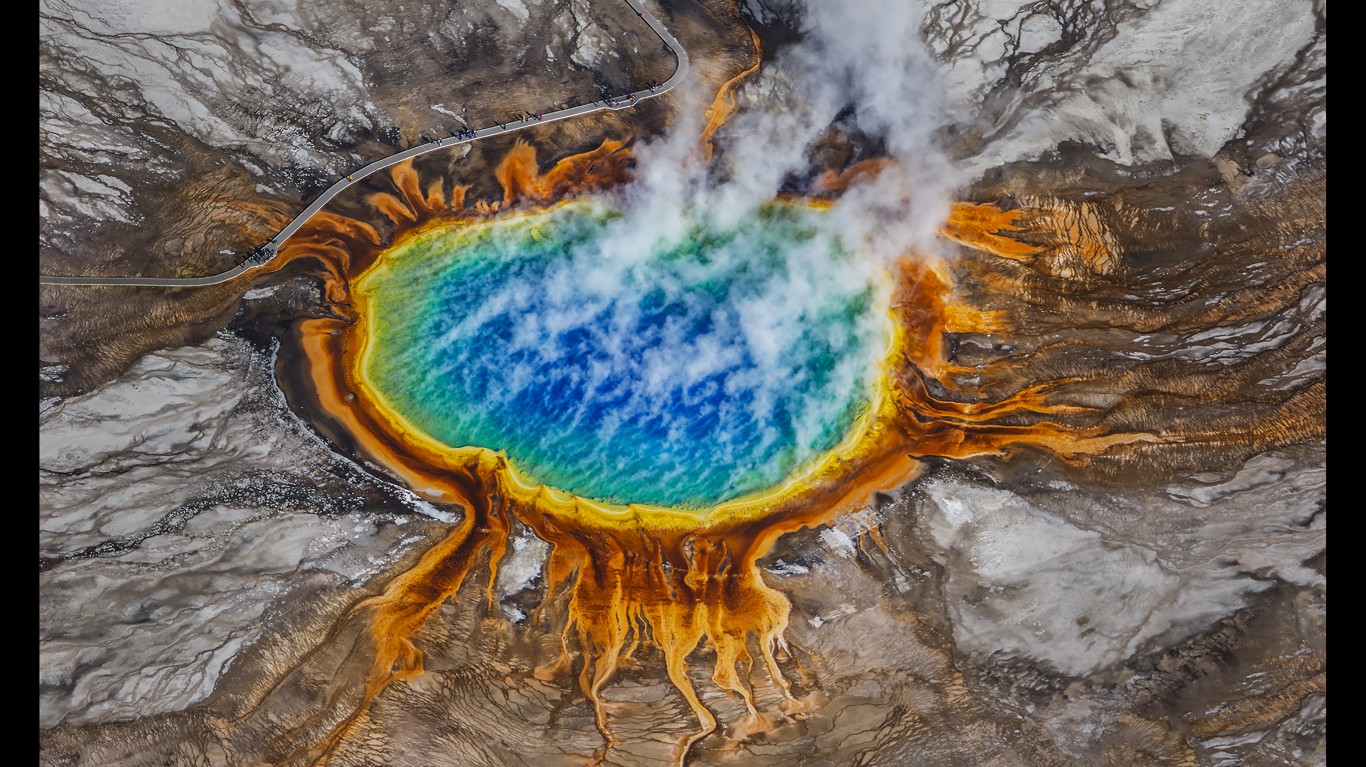
12. Grand Prismatic Spring
> Location: Wyoming
The largest hot spring in Yellowstone, the Grand Prismatic Spring is a rainbow of concentric colors, thanks to bacteria that inhabit the different temperature zones of the spring’s water, which is too hot to sustain life in the center, but gradually cools as it nears the edges of the pool.
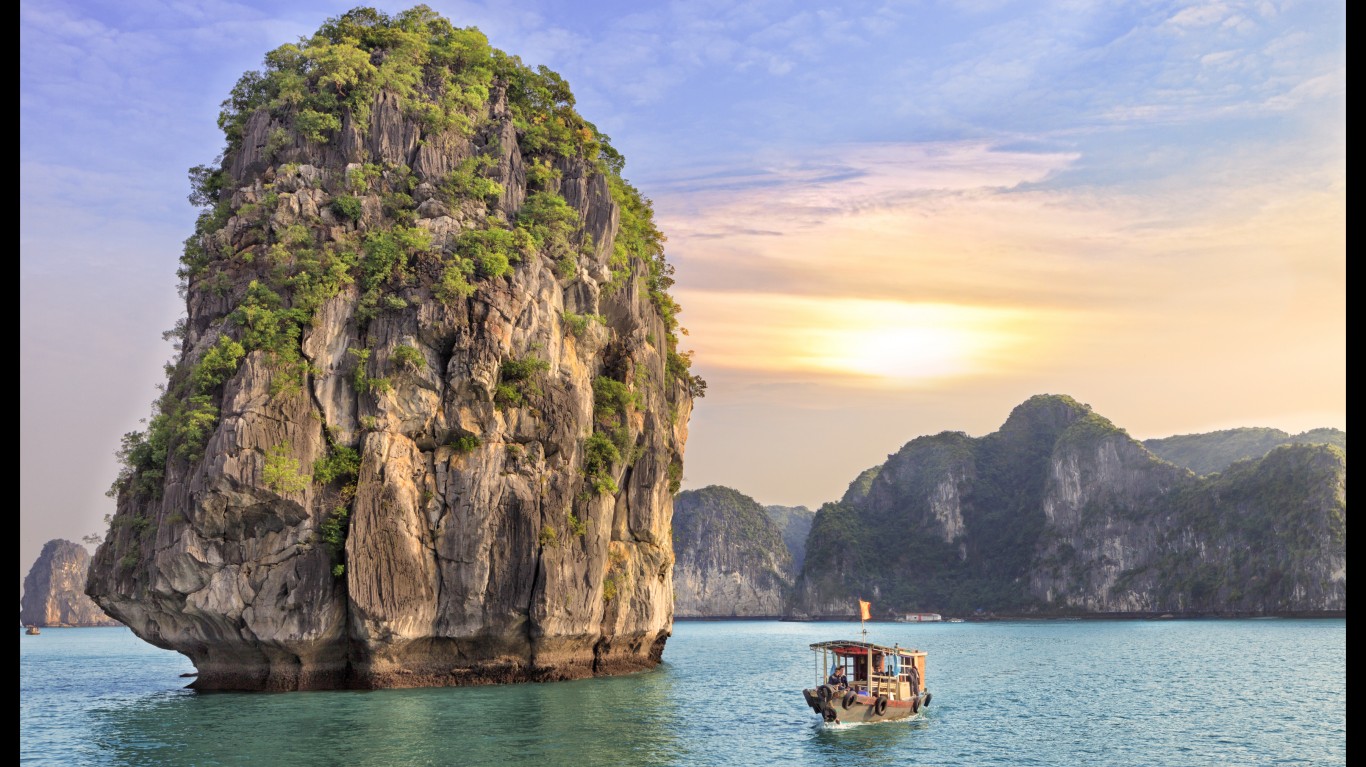
13. Ha Long Bay
> Location: Vietnam
Ha Long Bay is a turquoise gem studded with over 1,600 small limestone islets, many of them topped with rainforest growth, some of them hollow with caves to explore, and some even containing lakes of their own.
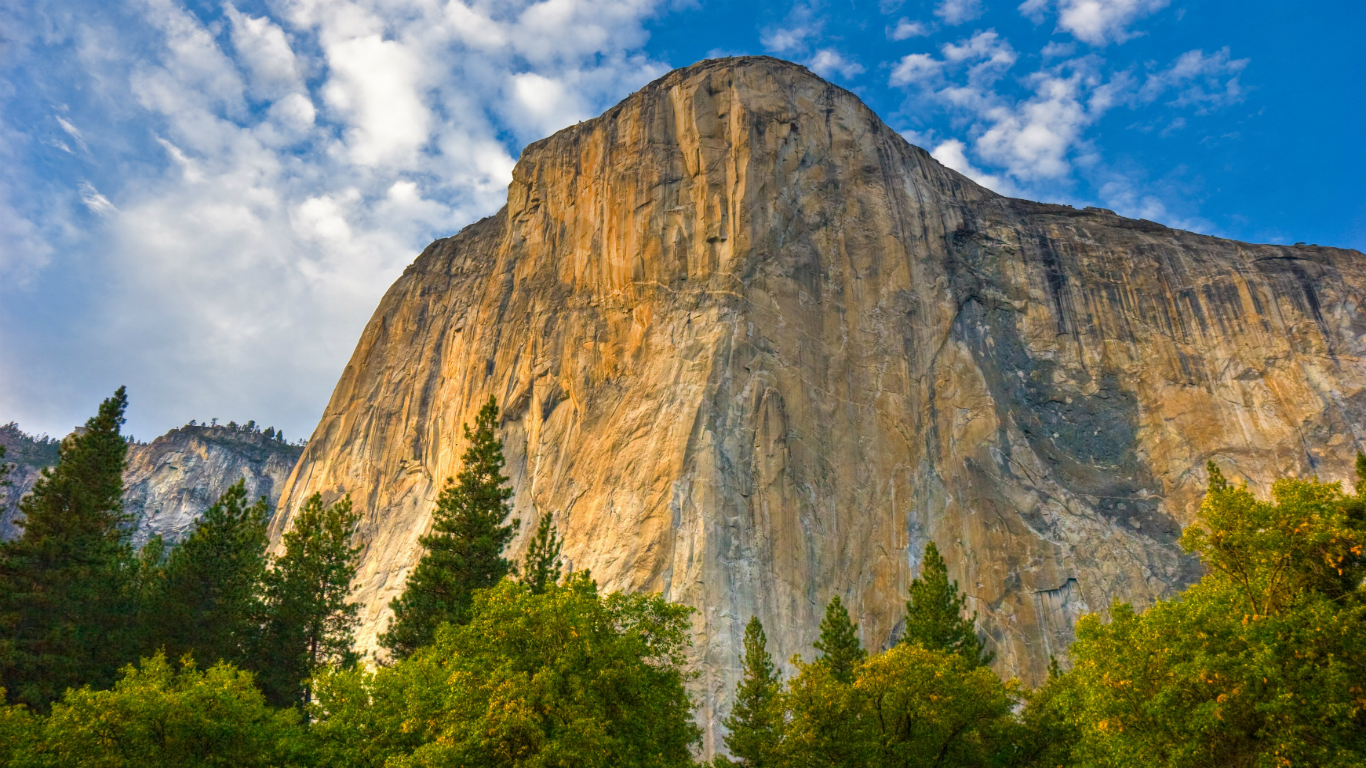
14. El Capitan
> Location: California
El Capitan is an iconic peak in Yosemite National Park, and one of the largest exposed pieces of granite in the world. It is a popular rock-climbing destination, and the site of a world-famous free-climb where in 2017 climber Alex Honnold scaled the 3,000 foot rock face without using ropes or other safety equipment.
[in-text-ad-2]
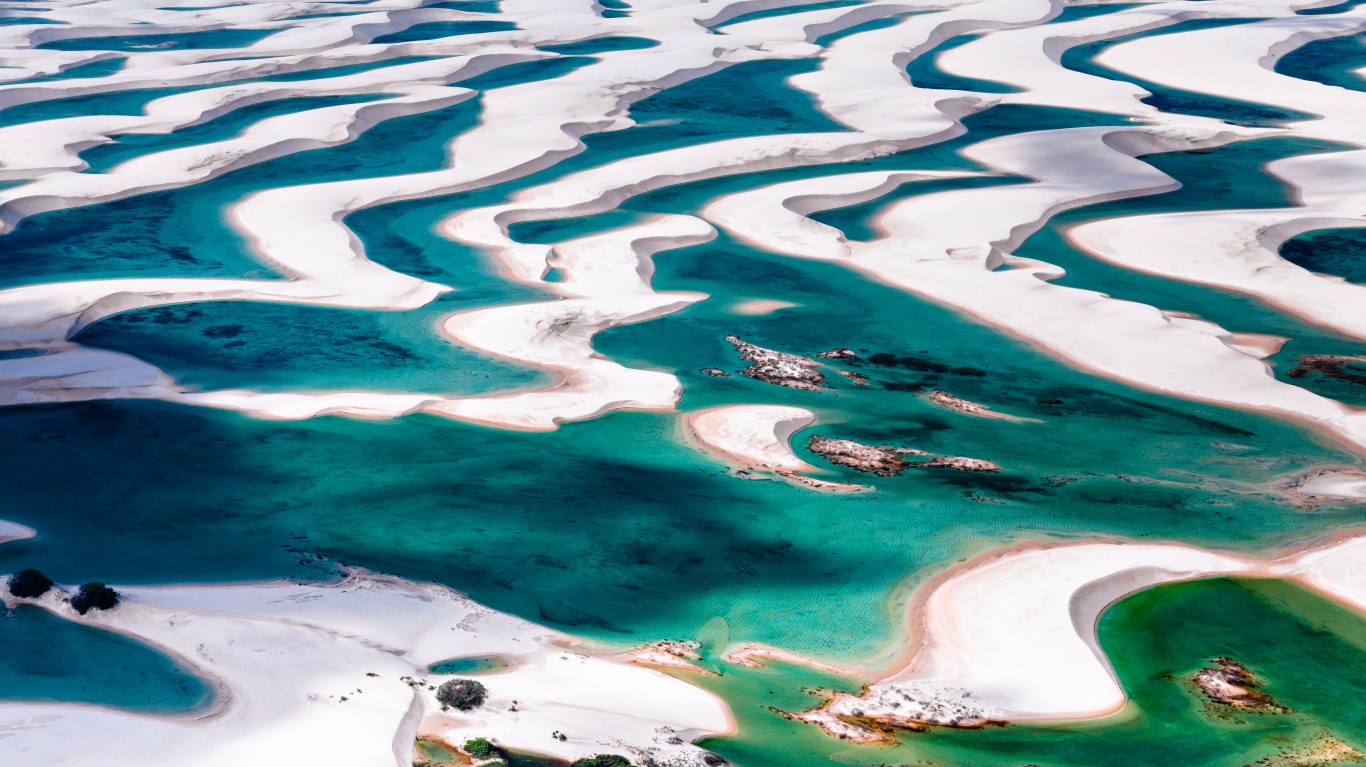
15. Lençóis Maranhenses National Park
> Location: Brazil
This National Park on the Atlantic Coast of Brazil is comprised of wind-sculpted white sand dunes that form deep, clear, blue lagoons in the rainy season. The ephemeral lagoons dry up after a few months, but while they exist, they are home to many insects, and wolffish that spend the dry season burrowed deep under the sand.
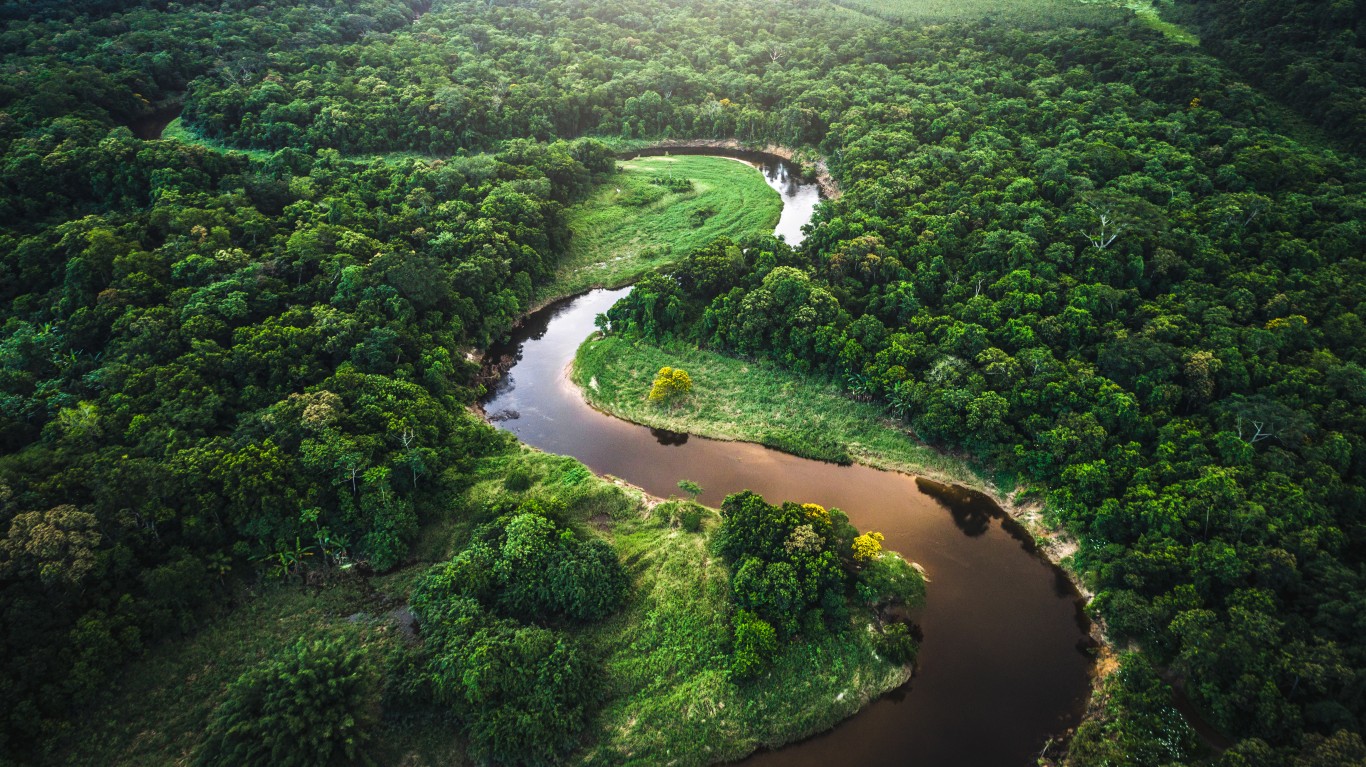
16. The Amazon Rainforest
> Location: South America
The largest tropical rainforest on earth, spanning eight South American countries, the Amazon is also one of the most biodiverse places left on the planet. Deforestation for industrial agriculture and cattle grazing, along with ongoing effects of the climate emergency, threaten the many species that live only in the Amazon.
[in-text-ad]
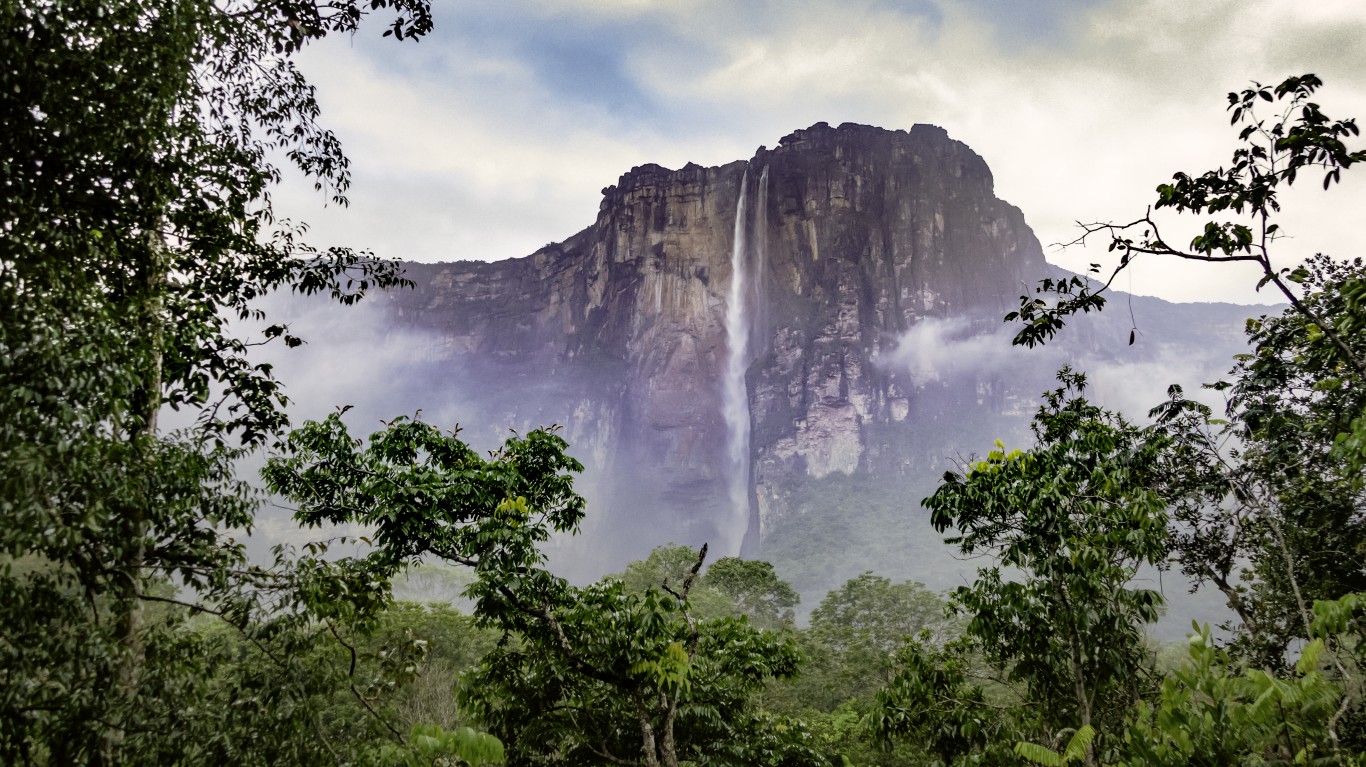
17. Angel Falls
> Location: Venezuela
The highest single waterfall in the world, Angel Falls on the Churun River drops over 3,000 feet. Because of its remote location, surrounded by dense rainforest, the best way to view the waterfall is by airplane.

18. The Wave
> Location: Utah and Arizona
Located on Bureau of Land Management (BLM) land on the Arizona/Utah border, The Wave is a calcified sandstone formation that began forming 190 million years ago. The six-mile round trip trek to The Wave has no marked trail or water source, and a few visitors have died attempting the hike.
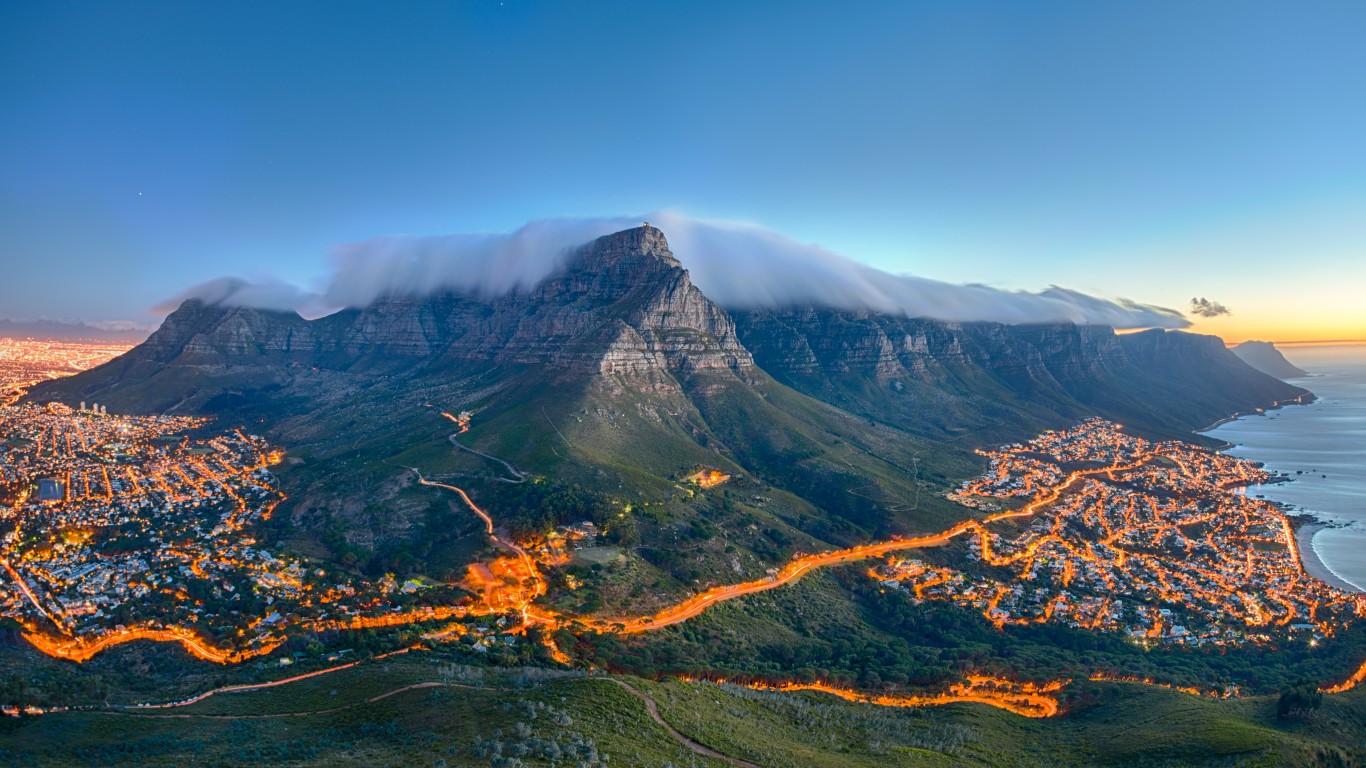
19. Table Mountain
> Location: South Africa
A flat-topped peak overlooking Cape Town, Table Mountain is home to a rich array of flora — over 1,470 species — which visitors can experience by hiking up, or by taking the popular cable car ride to the top of the mountain.
[in-text-ad-2]
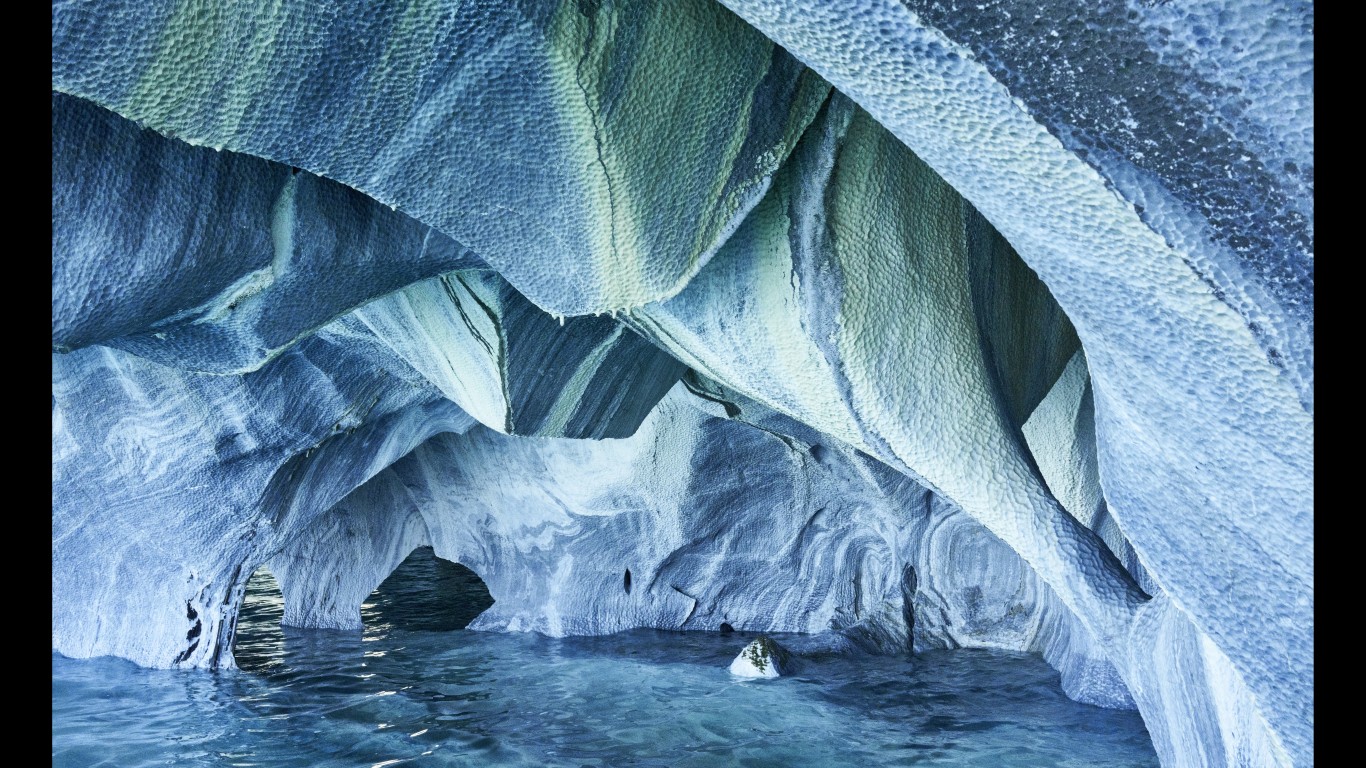
20. Marble Caves
> Location: Chile
Accessible only by boat, the Marble Caves are located next to a glacial lake in the Andes, on a peninsula of solid marble. The brilliant blue striped caverns are the result of 6,000 years of erosion caused by waves lapping against the marble.
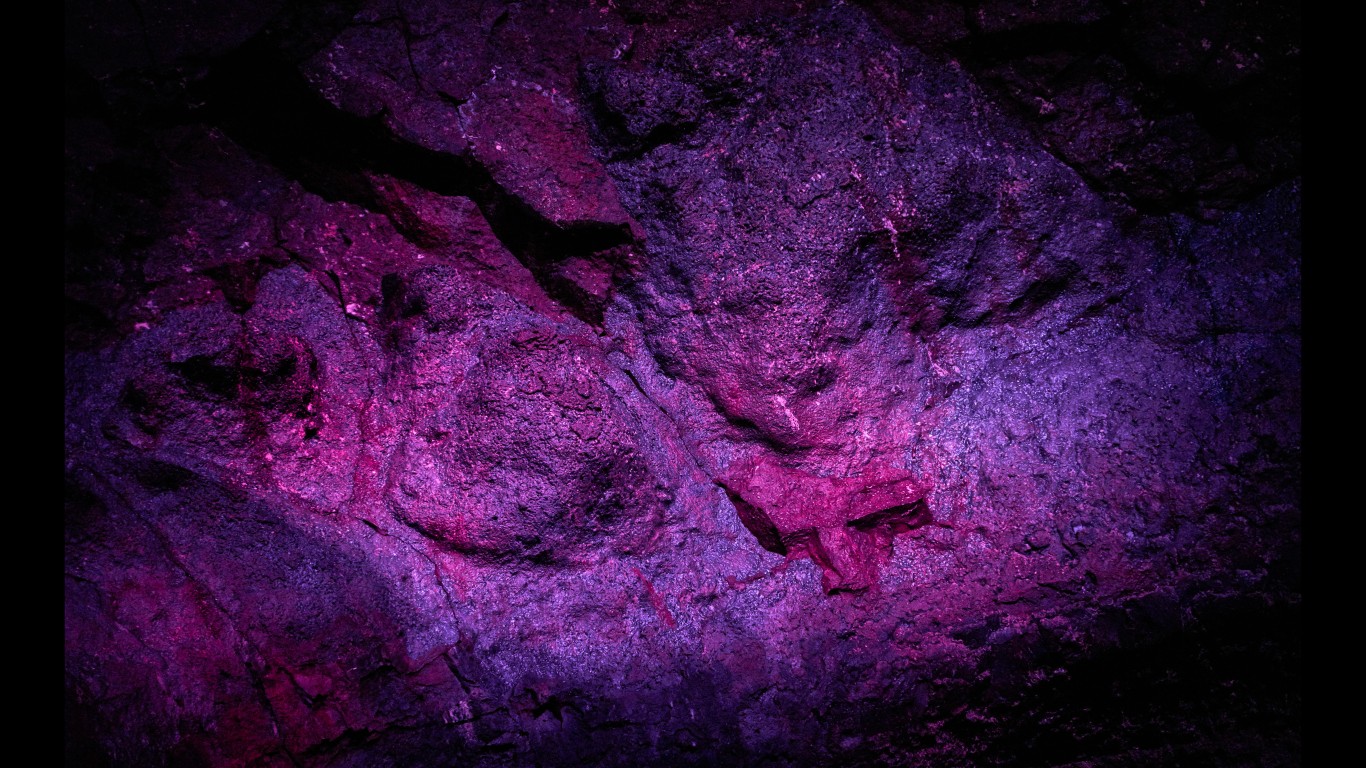
21. Jeju Island Lava Tubes
> Location: South Korea
The volcanic island of Jeju is home to the Geomunoreum lava tube system, regarded as the best preserved example of lava tube caves in the world. The multicolored caves full of diverse lava formations are an important geologic study site contributing to the understanding of volcanism.
[in-text-ad]
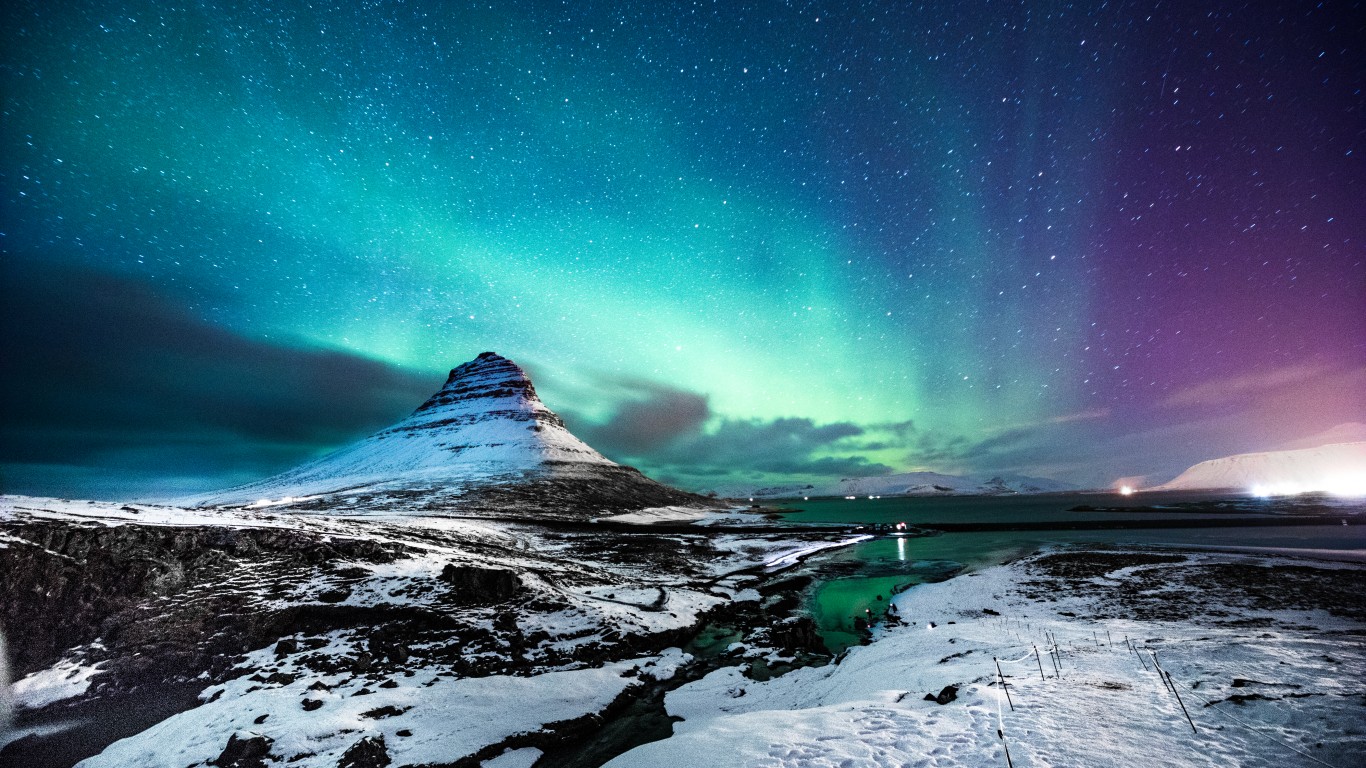
22. Northern Lights
> Location: Various
Best seen above the earth’s magnetic poles, the Northern Lights are the result of collisions between charged solar particles and gasses in the earth’s atmosphere. The various colors are caused by oxygen or nitrogen at different heights, from 60 to 200 miles above the earth.
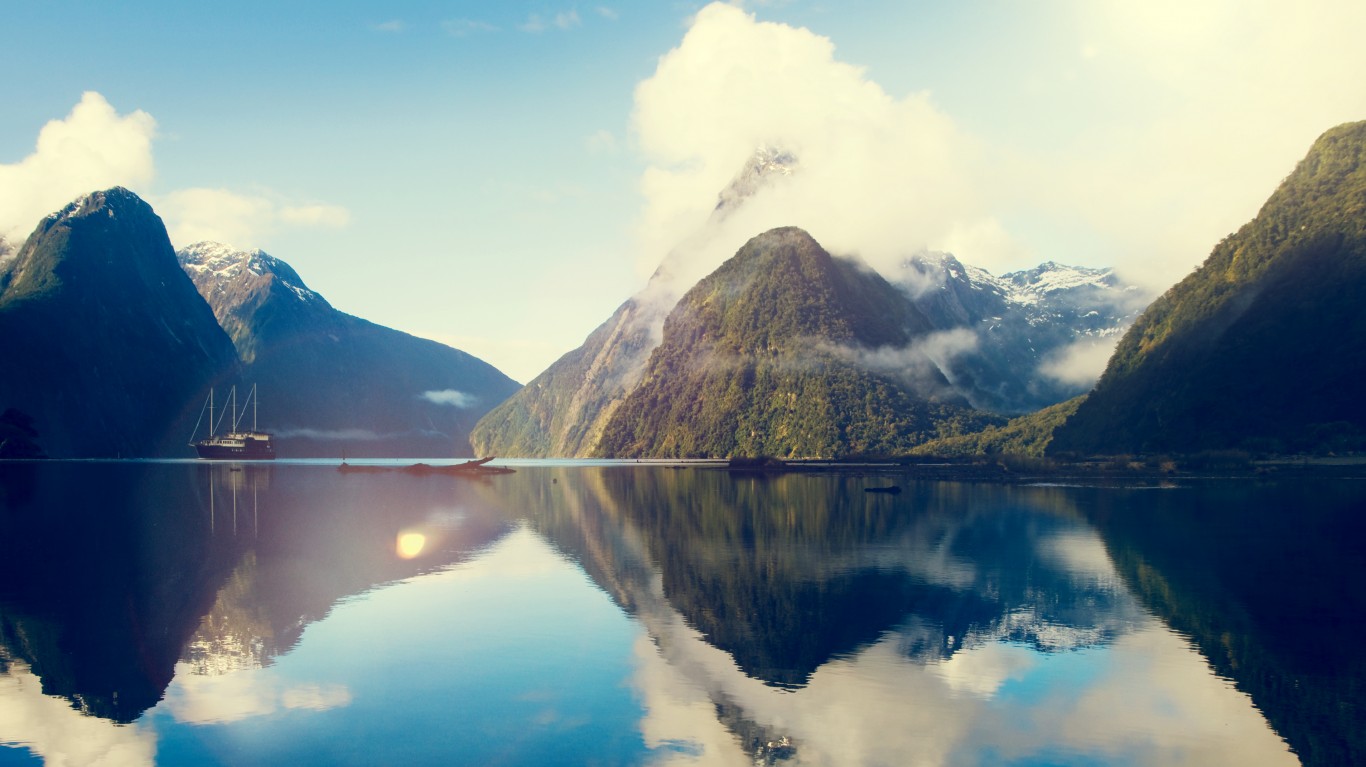
23. Milford Sound
> Location: New Zealand
A fiord on the Southwest side of New Zealand’s South Island, Milford Sound is a glacial formation of dark water surrounded by cliffs, waterfalls, and steep mountains covered in rainforest. The area is home to populations of seals, dolphins, penguins, and rare black coral.
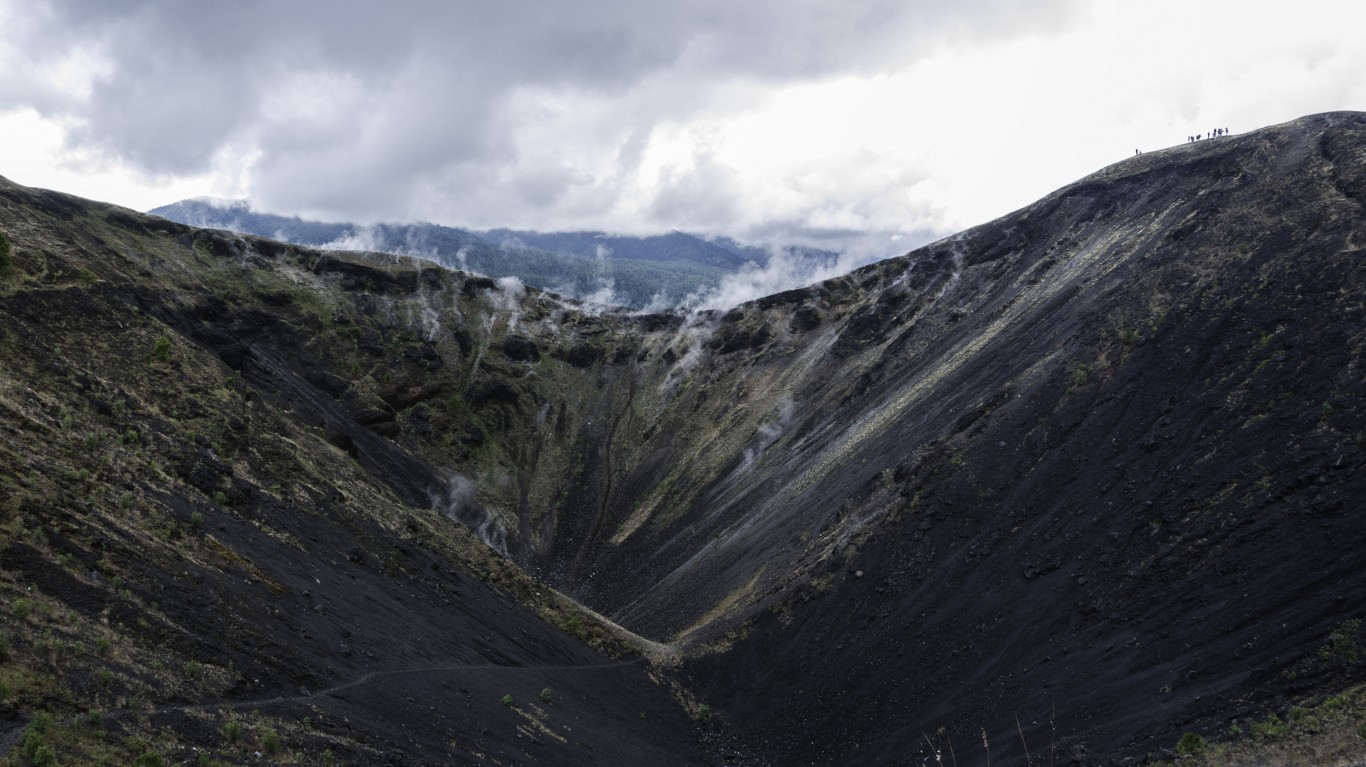
24. Paricutin Volcano
> Location: Mexico
One of the youngest volcanoes on earth, Paricutin began to form in 1943, when it erupted in the corn field of a local farmer and proceeded to bury two villages. It rose 1,475 feet in the first year and kept erupting until 1952.
[in-text-ad-2]
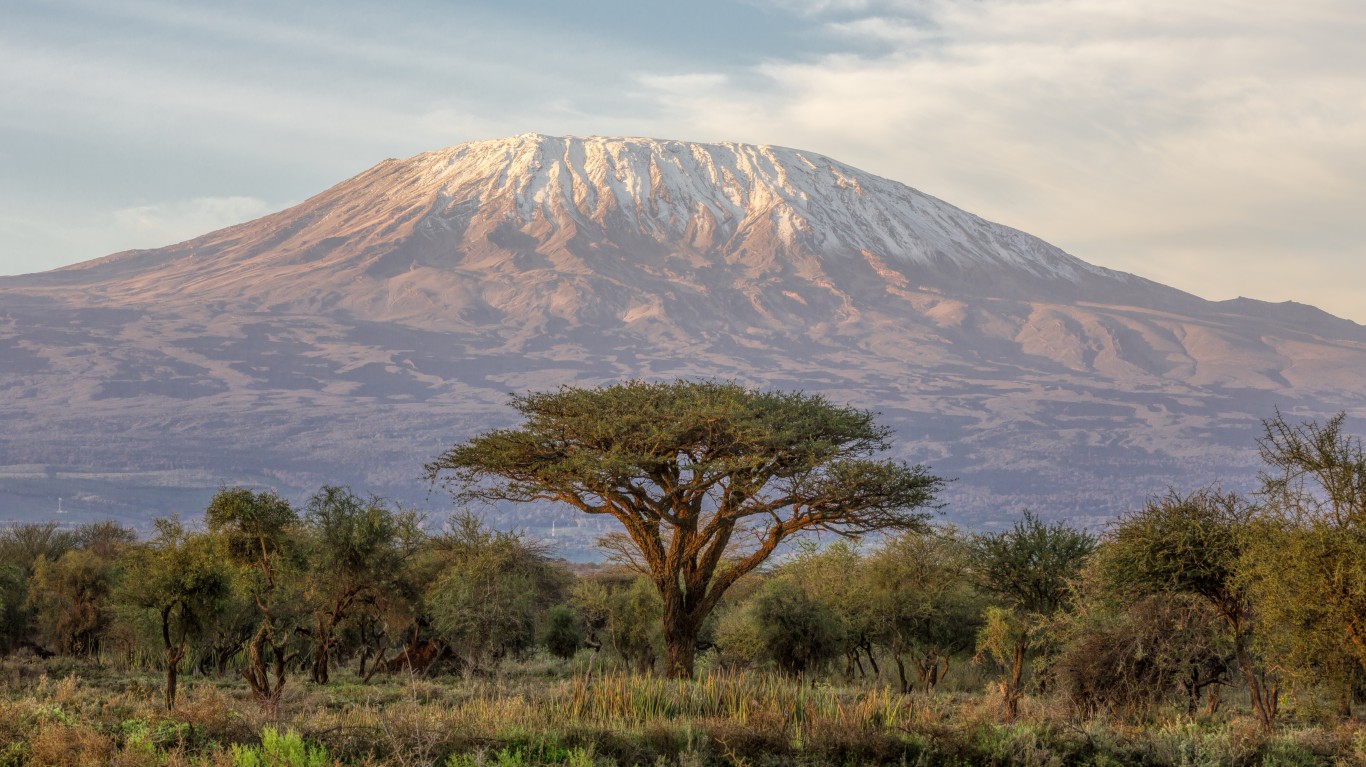
25. Mount Kilimanjaro
> Location: Tanzania
A dormant volcano, Mount Kilimanjaro is the highest mountain in Africa and the highest free standing mountain in the world. Its peak is 19,341 feet above sea level. The mountain contains five distinct climate zones ranging from lush tropical farmland and rainforest to high desert, to Arctic glaciers.
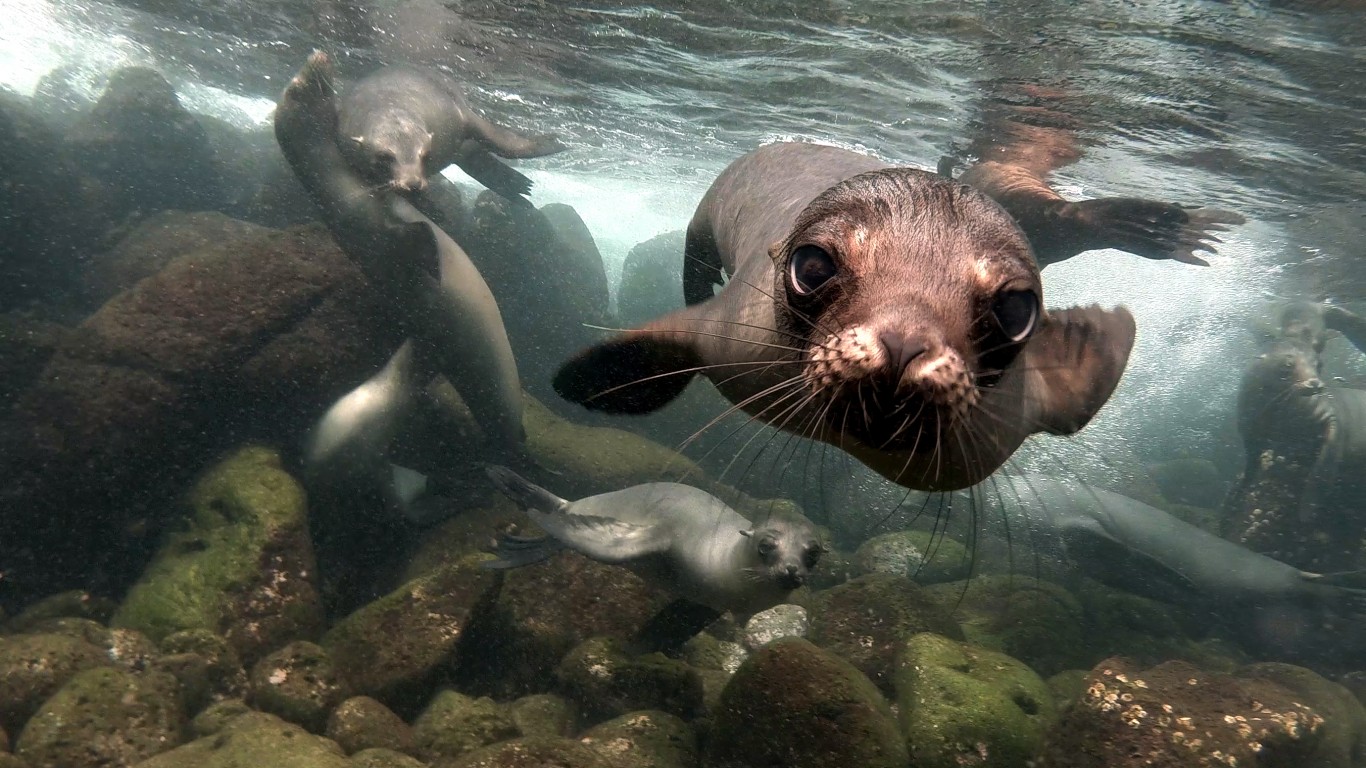
26. The Galapagos Islands
> Location: Pacific Ocean
This isolated chain of volcanic islands is home to several species of plants and animals that exist nowhere else in the world. Formed at the intersection of three ocean currents, the islands and surrounding waters contain one of the most diverse marine ecosystems in the world.
[in-text-ad]

27. Great Sand Dunes
> Location: Colorado
The tallest sand dunes in North America are surrounded by a surprisingly diverse array of tundra, wetlands, coniferous forests, and alpine lakes. Sledding and sandboarding (like snowboarding) are popular pastimes in the dunes, which rise as high as 755 feet.
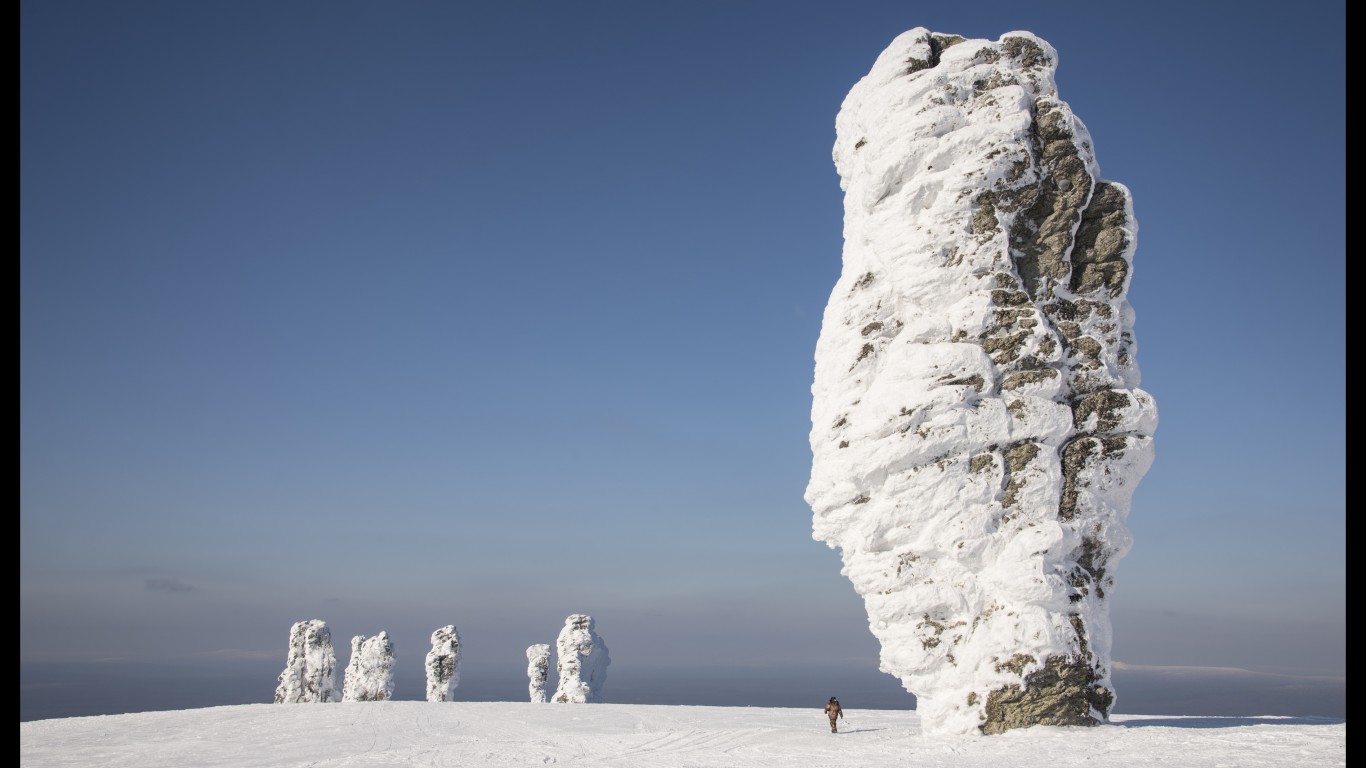
28. Manpupuner Rock Formations
> Location: Russia
On a flat plateau in the Ural Mountains, seven mysterious rock formations rise over 100 feet. They are likely the result of millions of years of erosion that wore down softer minerals in the mountains that once stood in the area, leaving only the hardest deposits intact. The isolated formations are sacred to the Mansi people of the area.

29. Iguazu Falls
> Location: Argentina and Brazil
Iguazu Falls are a semicircular waterfall amidst dense subtropical rainforest on the border of Brazil and Argentina. The protected zone in Iguazu National Park is a crucial conservation zone for what remains of the Interior Atlantic Forest and the thousands of species that inhabit it.
[in-text-ad-2]
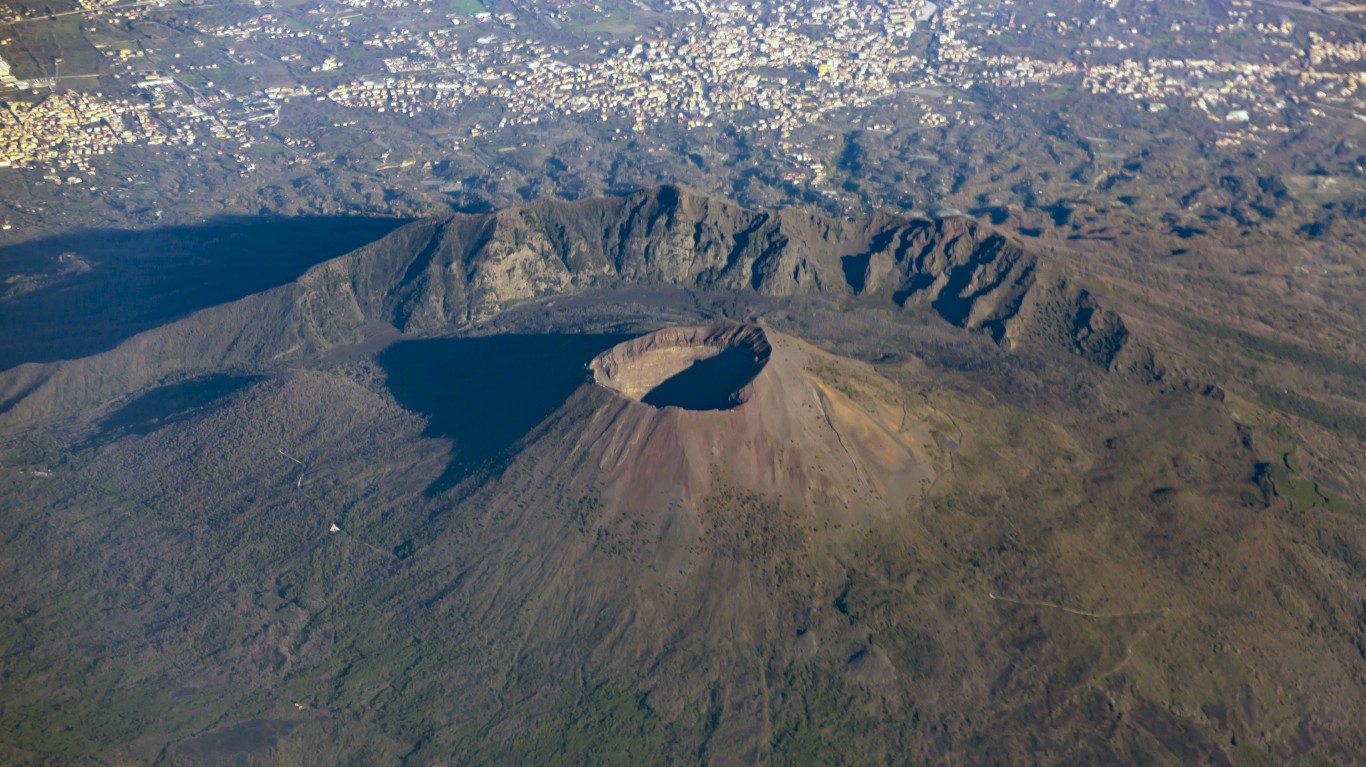
30. Vesuvius
> Location: Italy
Though its last eruption was in 1944, Vesuvius is the only active volcano on mainland Europe. It formed in the caldera of an older volcano, Mount Somma, and towers over the city of Naples.
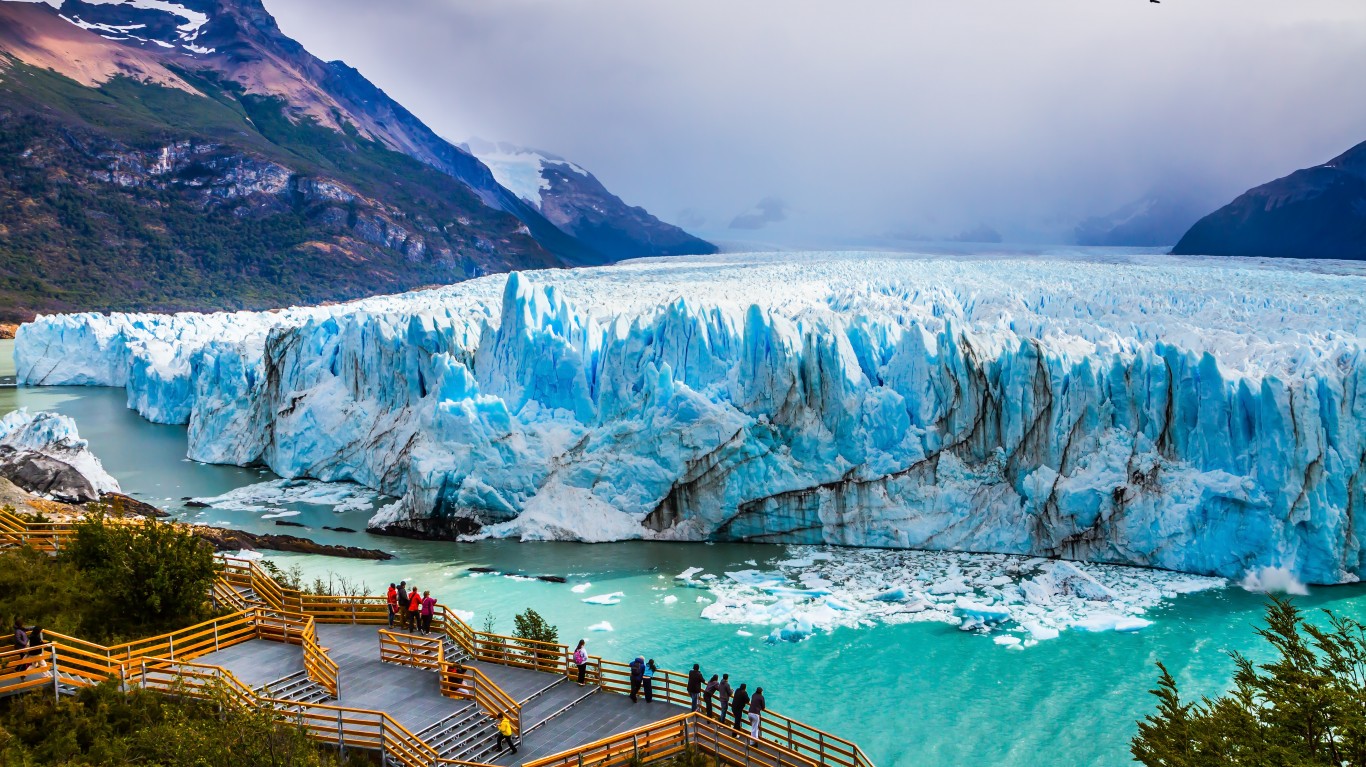
31. Perito Moreno Glacier
> Location: Argentina
Unlike the glaciers on earth that are shrinking or disappearing, the Perito Moreno Glacier spans 121 square miles and is growing. A boat trip through Lake Argentino around the base of the glacier is the safest way to get close to the ice and witness its sheer mass.
[in-text-ad]
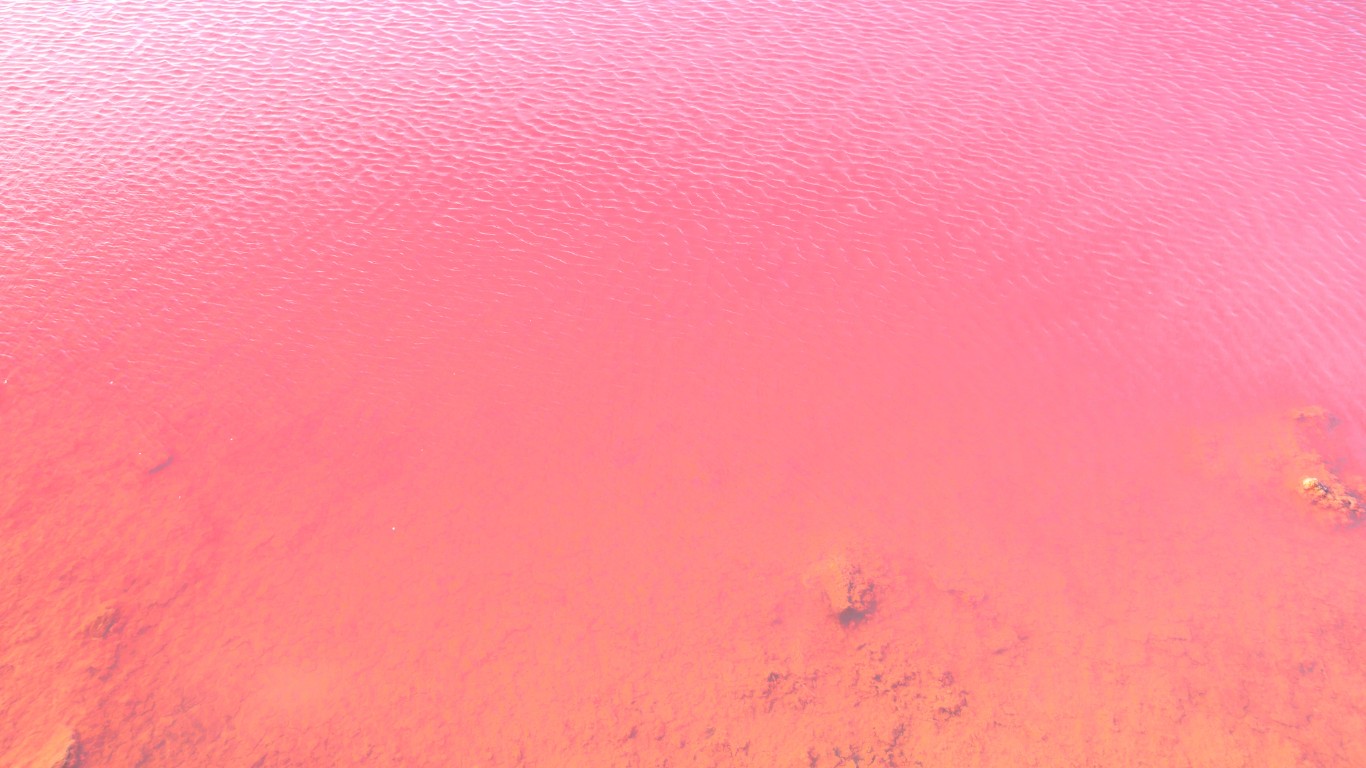
32. Lake Hillier
> Location: Australia
Located on an island inaccessible to tourists, the bubblegum pink Lake Hillier is only viewable to the public by air. Though scientists haven’t confirmed the exact cause of the pink waters, they’re most likely due to a combination of high salinity, algae, and bacteria.

33. The Giant’s Causeway
> Location: Northern Ireland
Made of a patchwork of 40,000 interlocking basalt columns, the Giant’s Causeway is a volcanic formation over 50 million years old. The site, which has inspired many local legends, is an important geological zone for the study of volcanic activity during the Tertiary period.

34. Jeita Grotto
> Location: Lebanon
Jeita Grotto is a limestone cave system spanning about five miles and containing an underground river and the largest known stalactite in the world. It was inhabited by ancient people and rediscovered in 1836.
[in-text-ad-2]
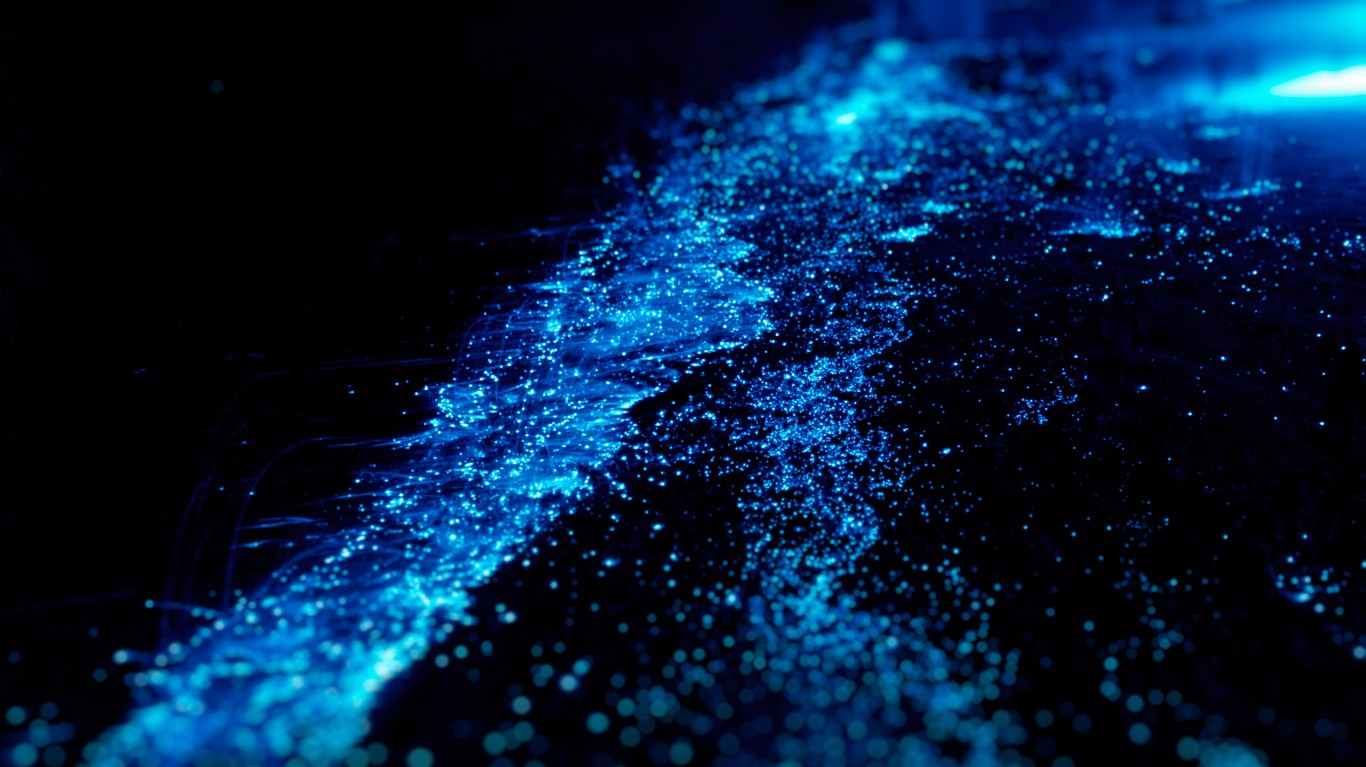
35. Vaadhoo Island
> Location: Maldives
Bioluminescent phytoplankton in the waters around Vaadhoo Island create the illusion of a sea of blue stars lapping the shores at night. Though a handful of beaches across the globe are famous for their glowing phytoplankton, some consider the concentration of illuminated water around Vaadhoo the best display in the world.
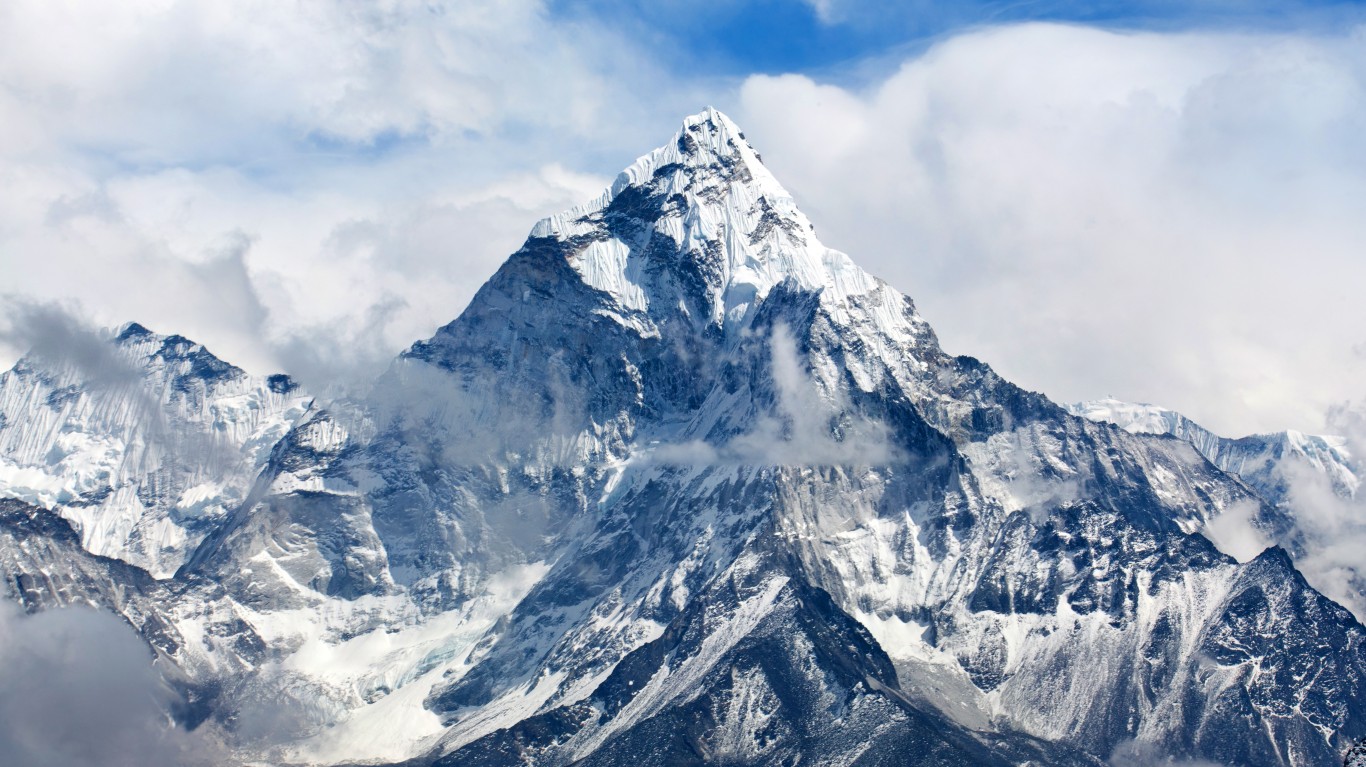
36. Mount Everest
> Location: Nepal
The highest point on Earth, Mount Everest rises 29,035 feet above sea level. It sits on the border of Nepal and Tibet in the Himalayan mountains. While the death rate for Everest climbers is about 1 in 10, safer options for viewing the frozen peak include hiking along the Shigatse Valley or taking a helicopter tour around the mountain.
[in-text-ad]
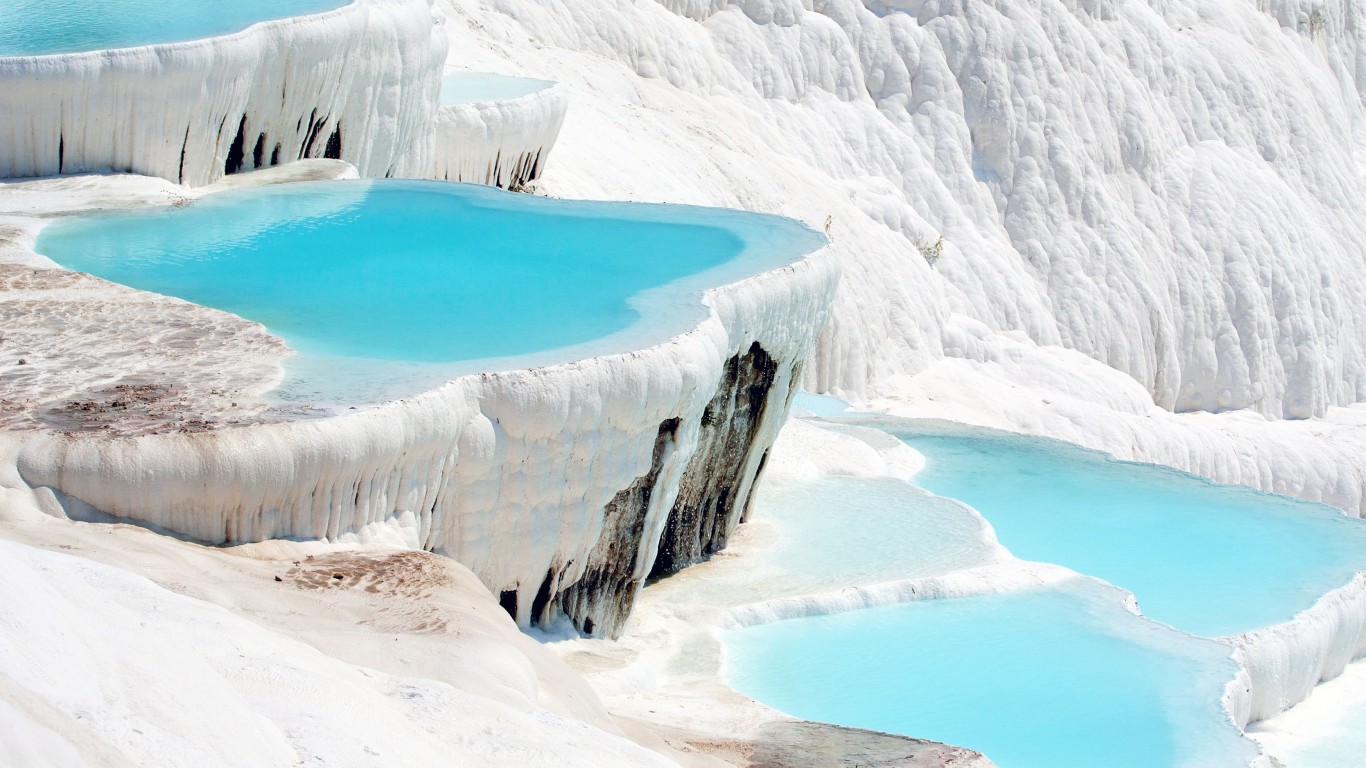
37. Pamukkale
> Location: Turkey
Pamukkale, which means Cotton Castle in Turkish, is home to a series of warm turquoise pools framed by travertine limestone terraces. Mineral deposits from the flowing hot springs built up over millennia and formed the limestone pools, which visitors are permitted to dip in.

38. El Yunque
> Location: Puerto Rico
El Yunque National Forest is the largest section of public land in Puerto Rico, and the only tropical rainforest in the United States National Forest System. Heavy rainfall contributes to the area’s ample rivers and waterfalls, which are popular for swimming and photography.
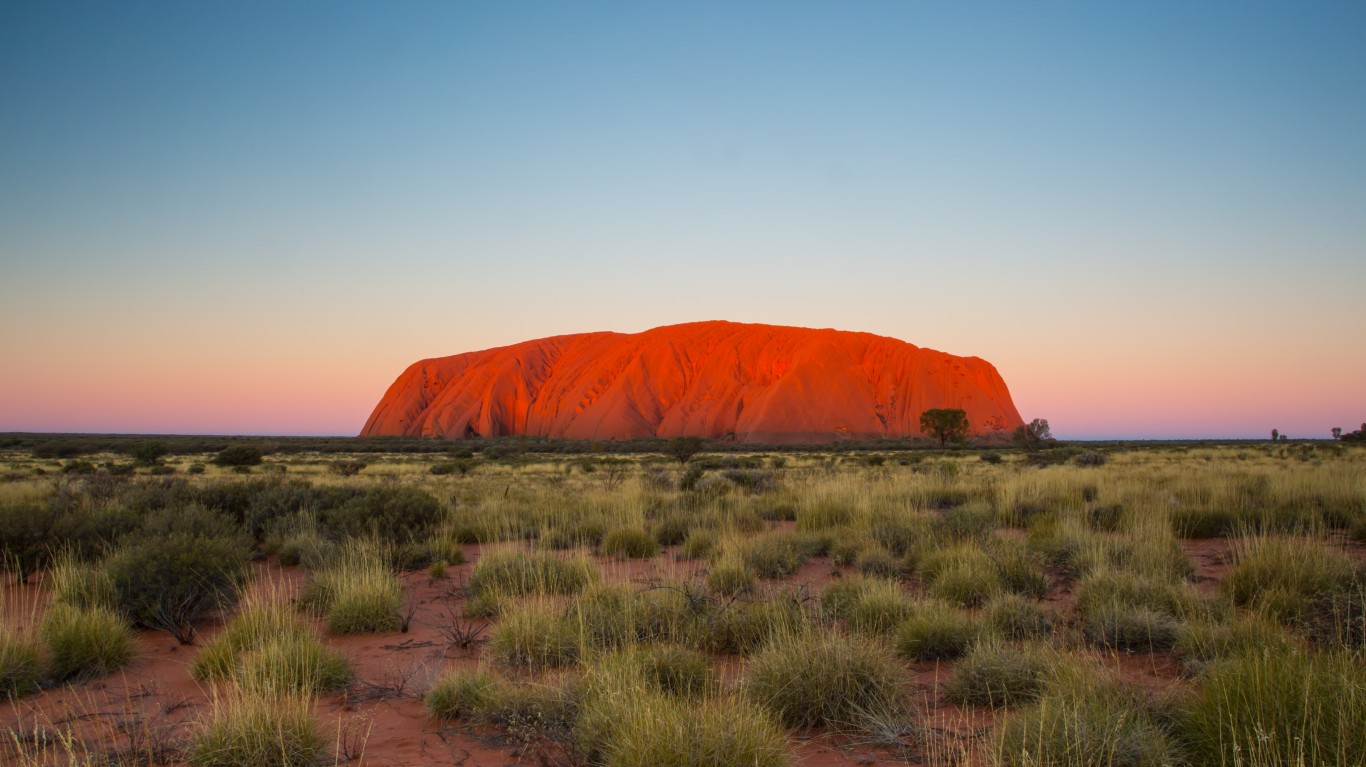
39. Uluru
> Location: Australia
Uluru is a massive, isolated, sandstone monolith famous for its bright red hue. It rises 1,142 feet from the surrounding desert and is nearly six miles in circumference. Uluru is sacred to the Aboriginal people of the area, and caves within the base of the stone contain ancient petroglyphs.
[in-text-ad-2]
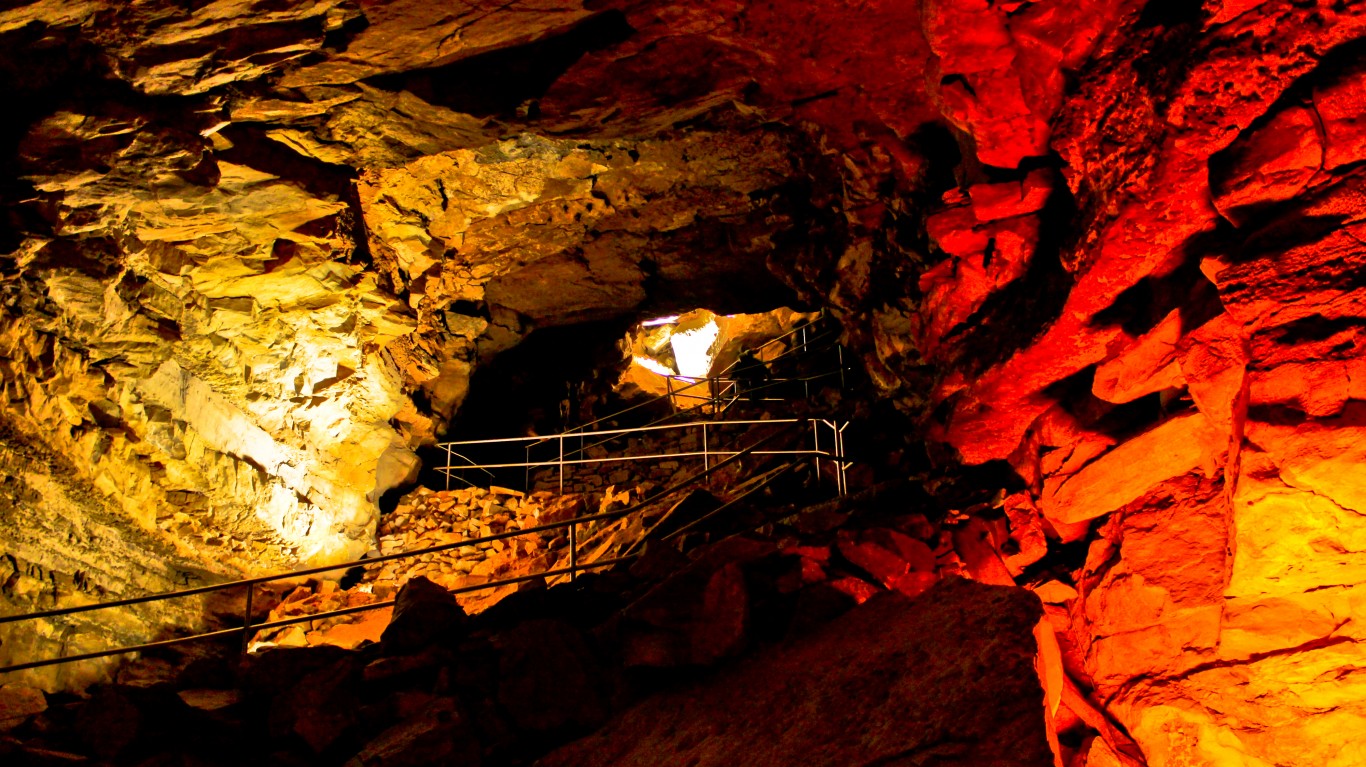
40. Mammoth Cave
> Location: Kentucky
The world’s longest known cave system, with over 400 miles of surveyed caverns, is in southern Kentucky. The network contains one of the highest diversities of cave-adapted organisms in the world.

41. Eye of the Sahara
> Location: The Sahara Desert
The Richat Structure, also known as the Eye of the Sahara, is a huge crater-like formation in Mauritania that is visible from space. Resembling a giant bullseye, the formation contains rocks that predate life on earth, and may have formed when Pangaea began to separate.
[in-text-ad]
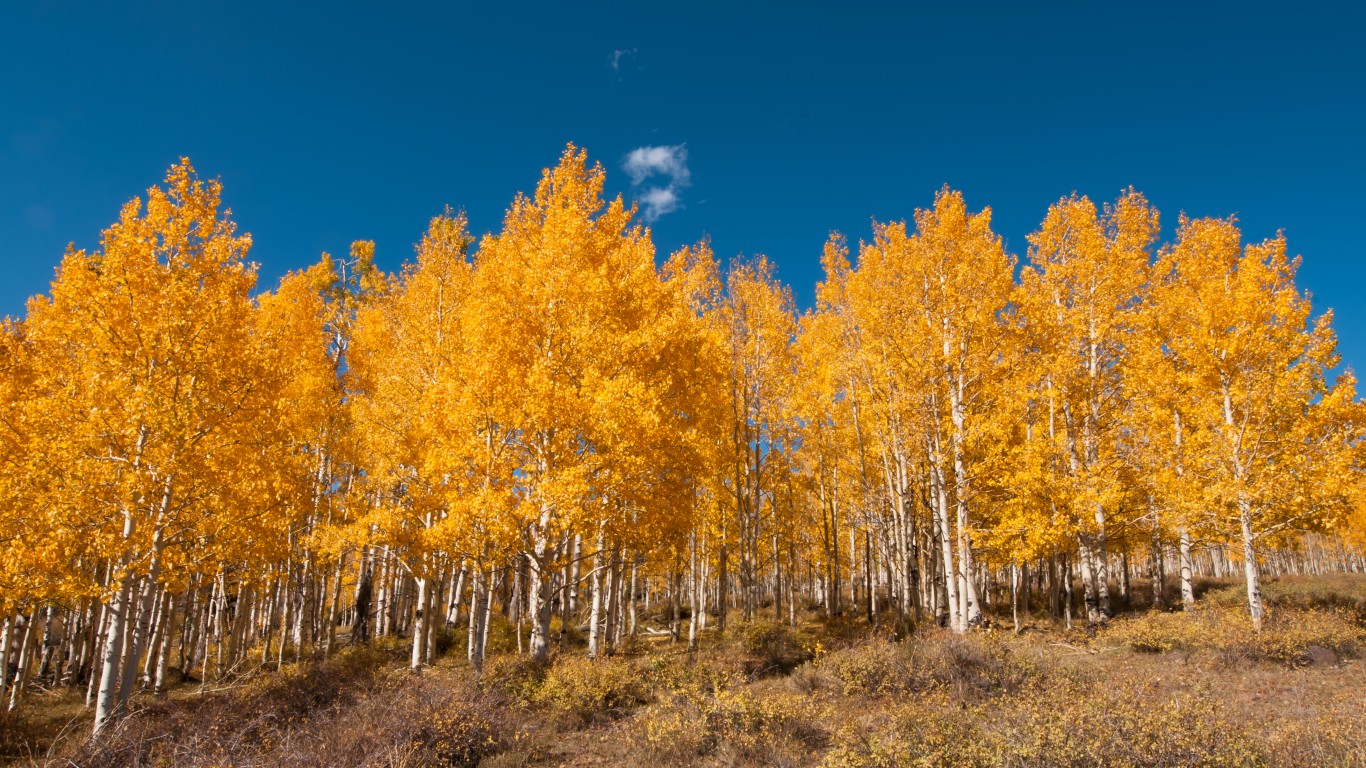
42. Pando
> Location: Utah
One of the largest living organisms in the world, Pando is a quaking aspen forest in Utah made up of 47,000 trees that are genetically identical. The organism reproduces asexually by sending new shoots up from the roots of existing trees, resulting in a forest of interconnected clones.
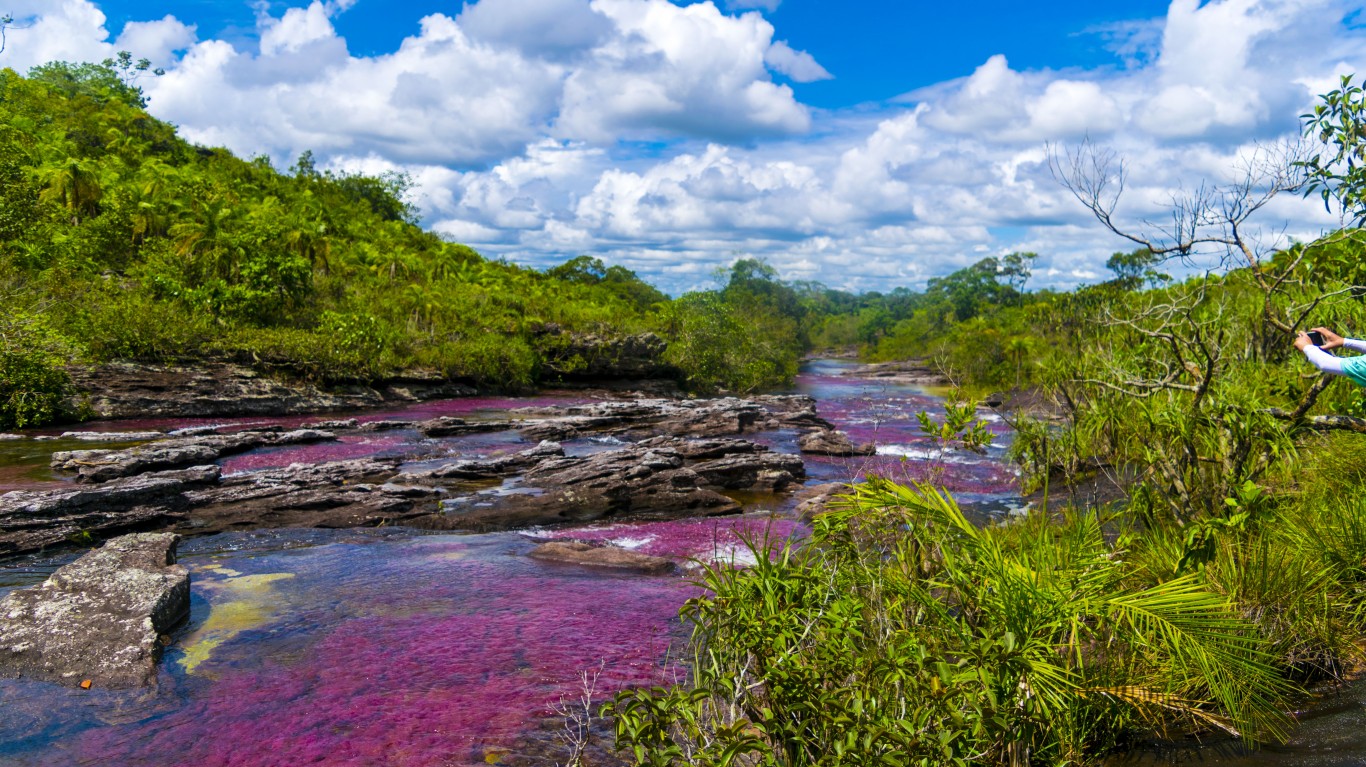
43. Cano Cristales River
> Location: Colombia
For a short time between the wet and dry seasons — before the river becomes too deep and the waters too fast — the Cano Cristales river bottom blooms with a rare red plant. During this brief period the area displays a shocking rainbow of colors.
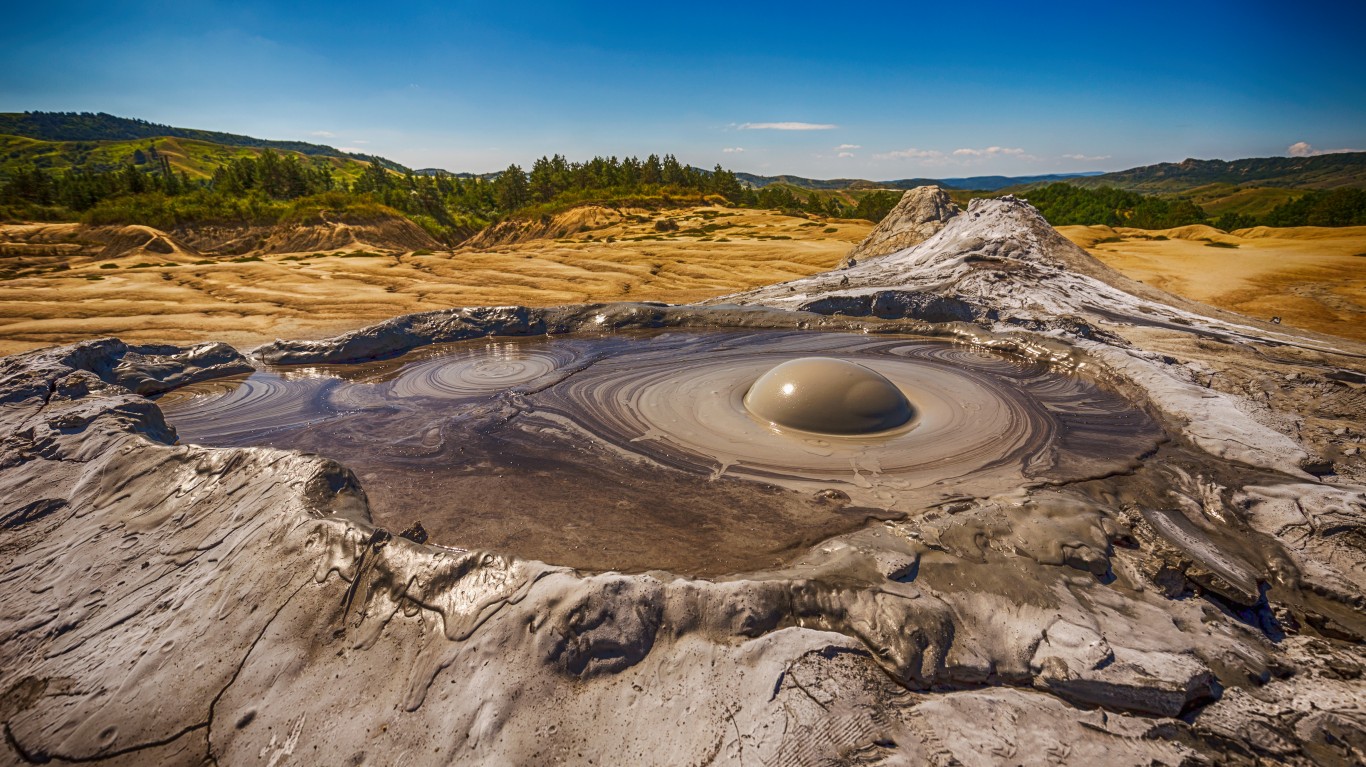
44. Mud volcanoes
> Location: Azerbaijan
Azerbaijan holds over a third of the world’s mud volcanoes. Formed by gas instead of magma, the mud volcanoes can be nearly freezing cold, and don’t grow as large as lava volcanoes. Occasionally the gas catches fire, and flames can be seen shooting from the earth.
[in-text-ad-2]
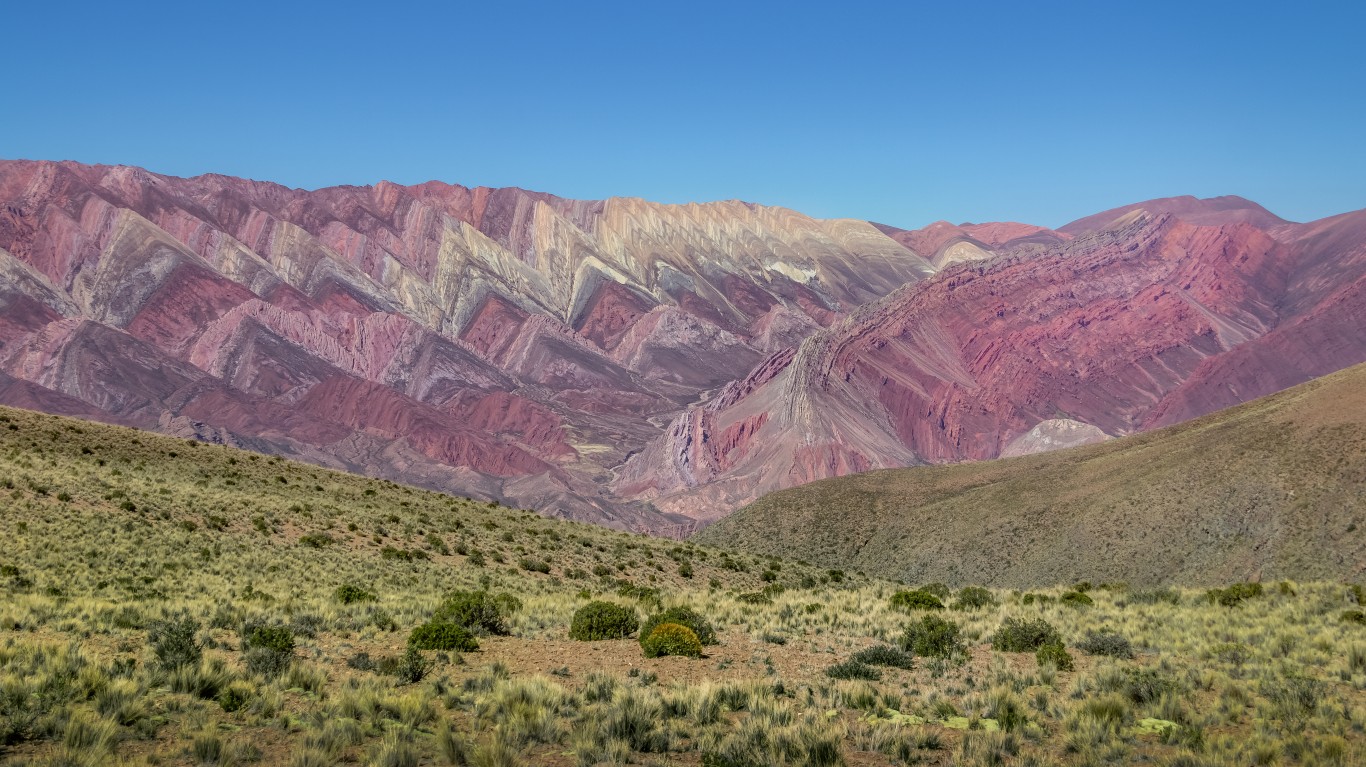
45. Serrania de Hornocal
> Location: Argentina
A limestone mountain range of breathtaking colors, Serrania de Hornocal is part of the Yacoraite, a Mesozoic formation. The ridges are a geologic structure called flatirons, which are steep triangular slopes formed by erosion.
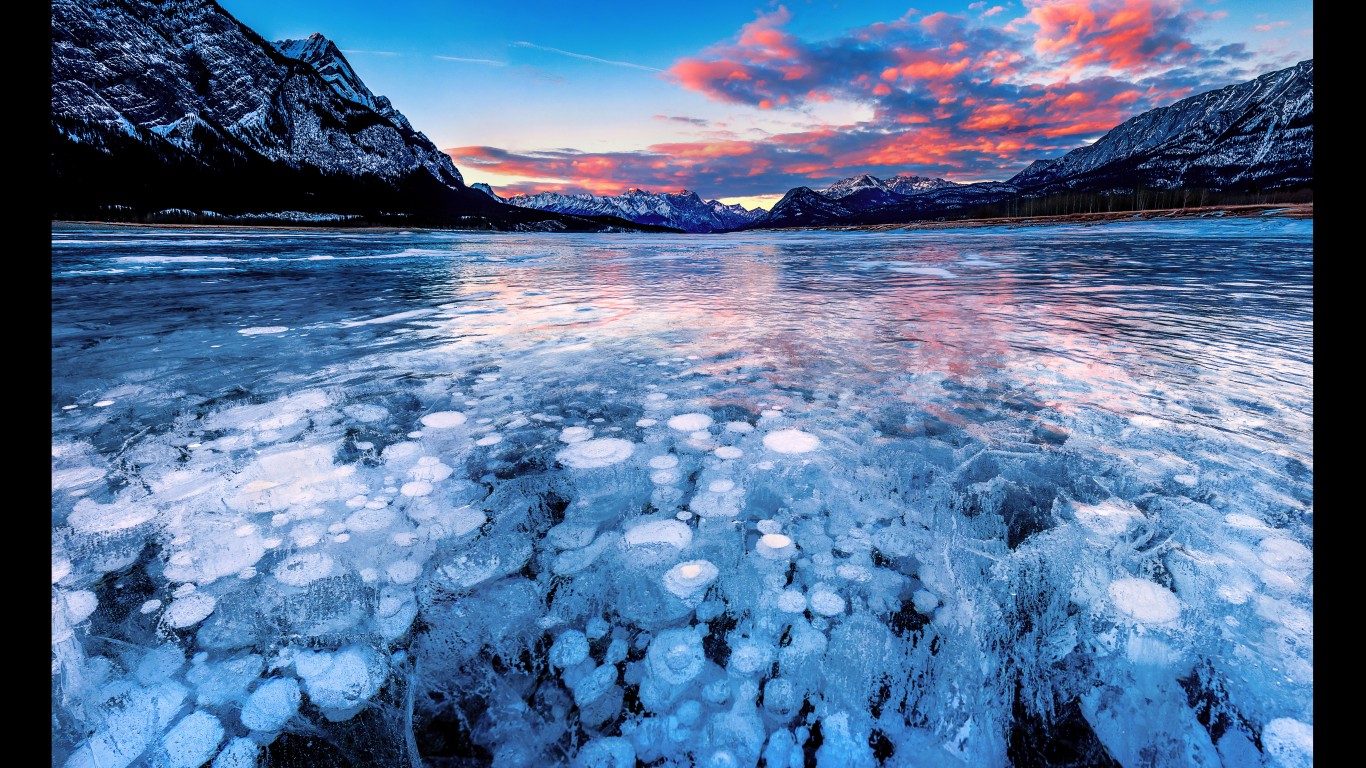
46. Abraham Lake
> Location: Canada
A man-made reservoir in Alberta, Abraham Lake freezes over in the winter like any other northern lake. What distinguishes this natural wonder are pockets of methane gas that rise up from under the lake to form stacks of frozen underwater bubbles near the surface.
[in-text-ad]
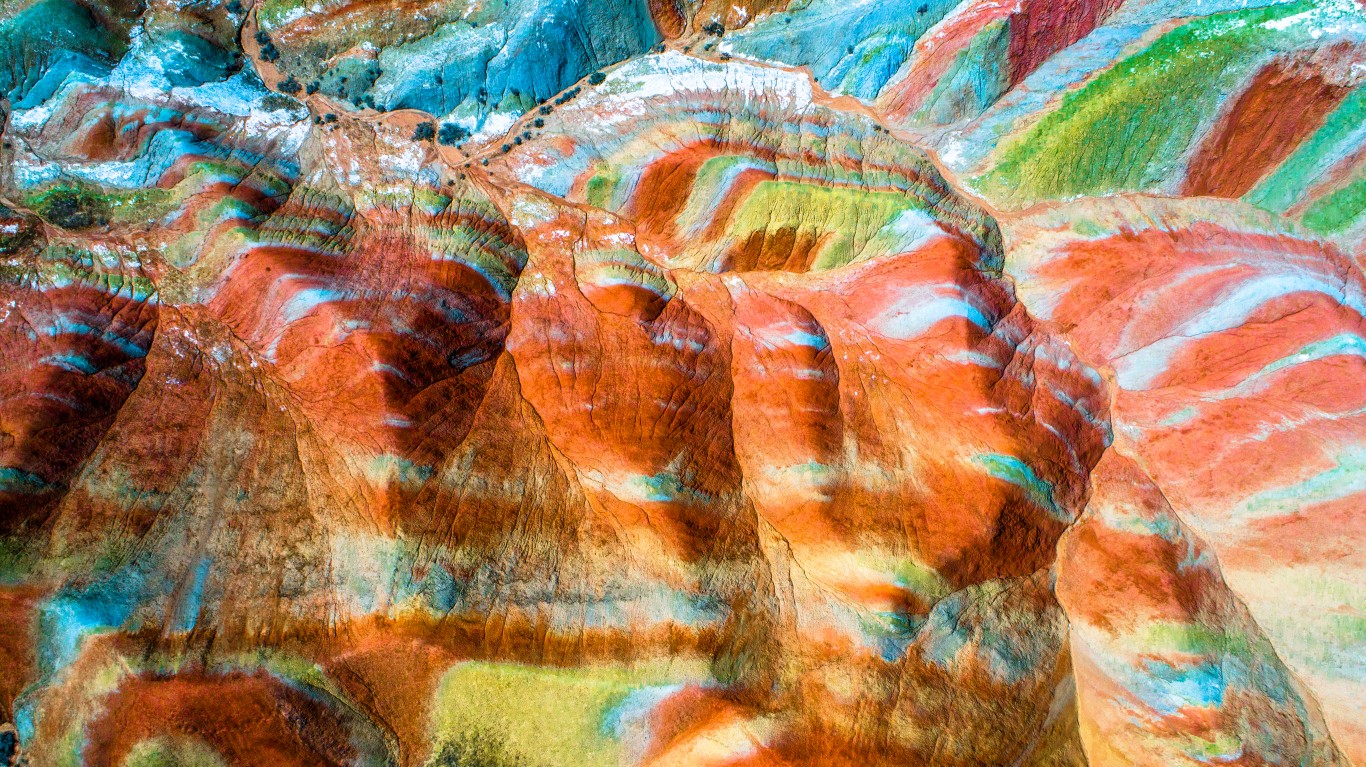
47. Zhangye Danxia National Geological Park
> Location: China
The multicolored, striped landforms at Zhangye Danxia were formed after layers of sandstone and minerals, pressed together over 24 million years, were buckled by tectonic action, then worn away by thousands of years of erosion.
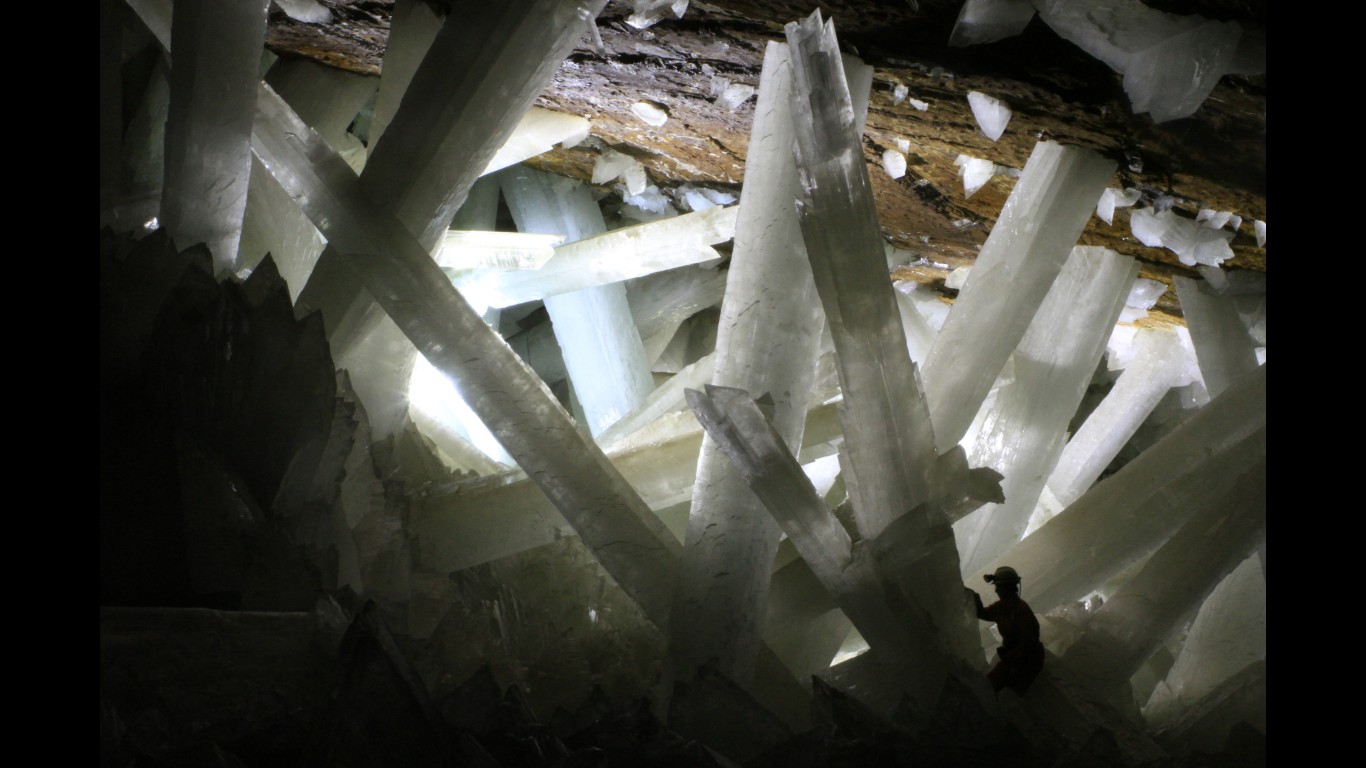
48. Cave of Crystals
> Location: Mexico
This cavern full of giant crystals in Mexico was discovered in 2000 by miners after they pumped water out of a cave nearly 1,000 feet under the Sierra de Naica Mountain. The largest of the selenite crystals, which grew uninterrupted for at least half a million years, are 36 feet long and three feet thick.
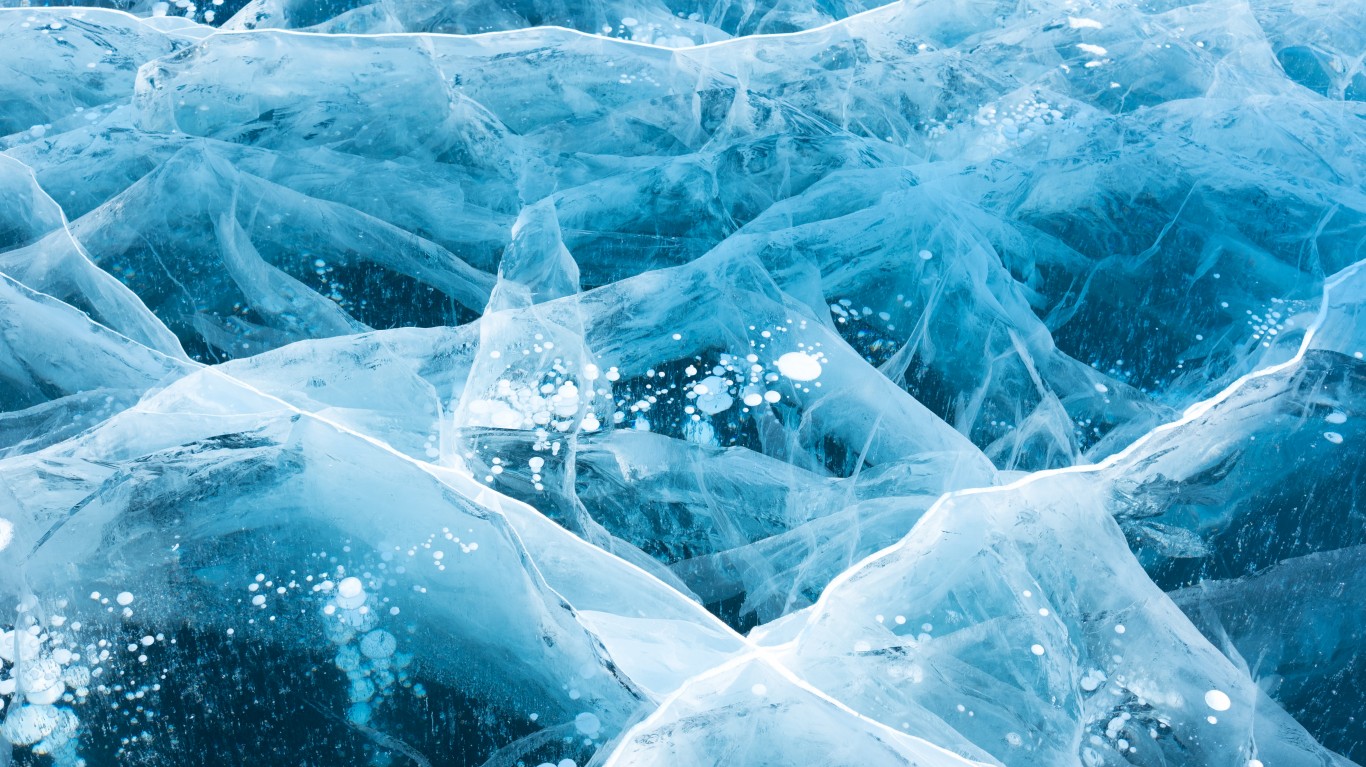
49. Lake Baikal
> Location: Russia
An ancient, massive lake, Baikal is considered the deepest and cleanest lake on earth. When frozen, the lake’s incredibly transparent ice forms bubbles, cracks, and other impressive patterns, while also allowing visibility as deep as 130 feet.
[in-text-ad-2]
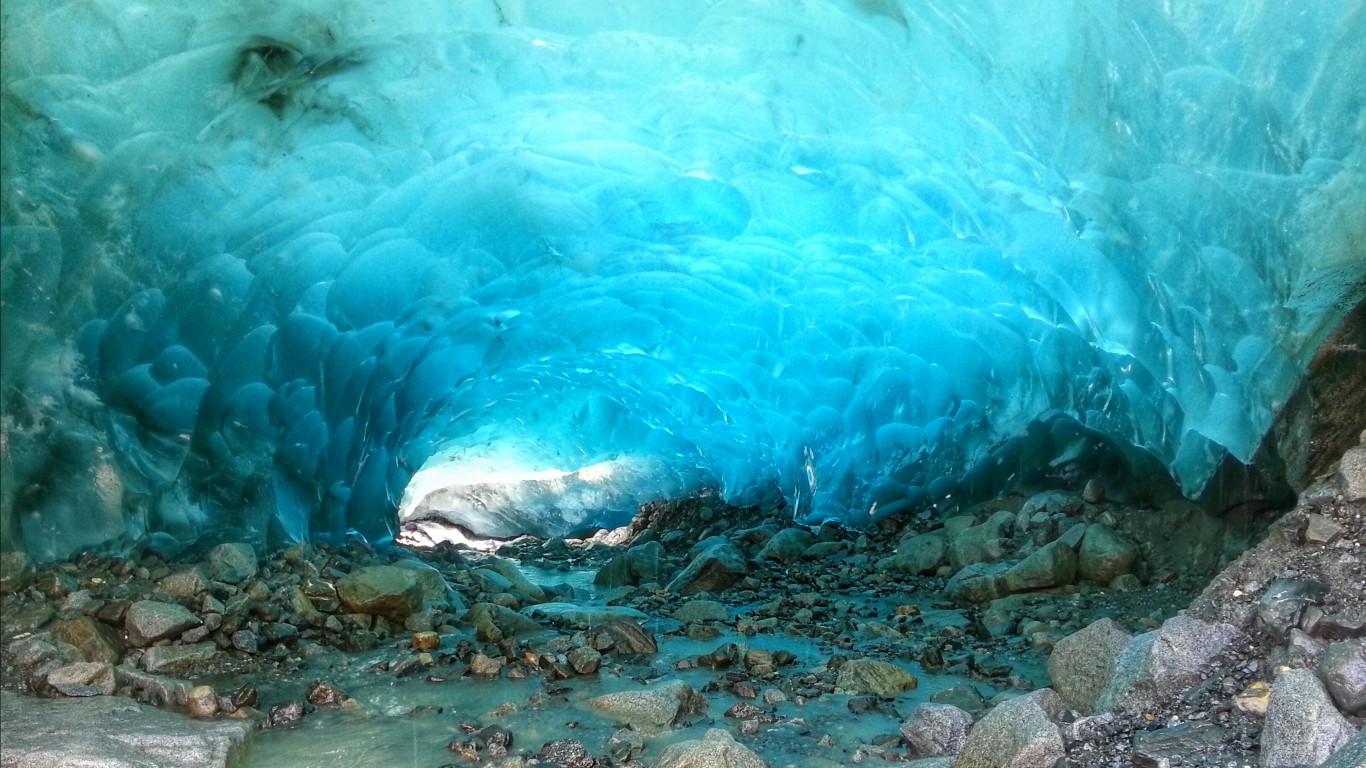
50. Mendenhall Ice Caves
> Location: Alaska
Inside a partially hollow 12-mile long glacier, the Mendenhall Ice Caves near Juneau are only accessible by first kayaking to the edge, then climbing over the glacier. Fast-rising ocean temperatures in recent decades have contributed to the Mendenhall glacier receding by almost two miles since 1958.
It’s Your Money, Your Future—Own It (sponsor)
Retirement can be daunting, but it doesn’t need to be.
Imagine having an expert in your corner to help you with your financial goals. Someone to help you determine if you’re ahead, behind, or right on track. With SmartAsset, that’s not just a dream—it’s reality. This free tool connects you with pre-screened financial advisors who work in your best interests. It’s quick, it’s easy, so take the leap today and start planning smarter!
Don’t waste another minute; get started right here and help your retirement dreams become a retirement reality.
Thank you for reading! Have some feedback for us?
Contact the 24/7 Wall St. editorial team.
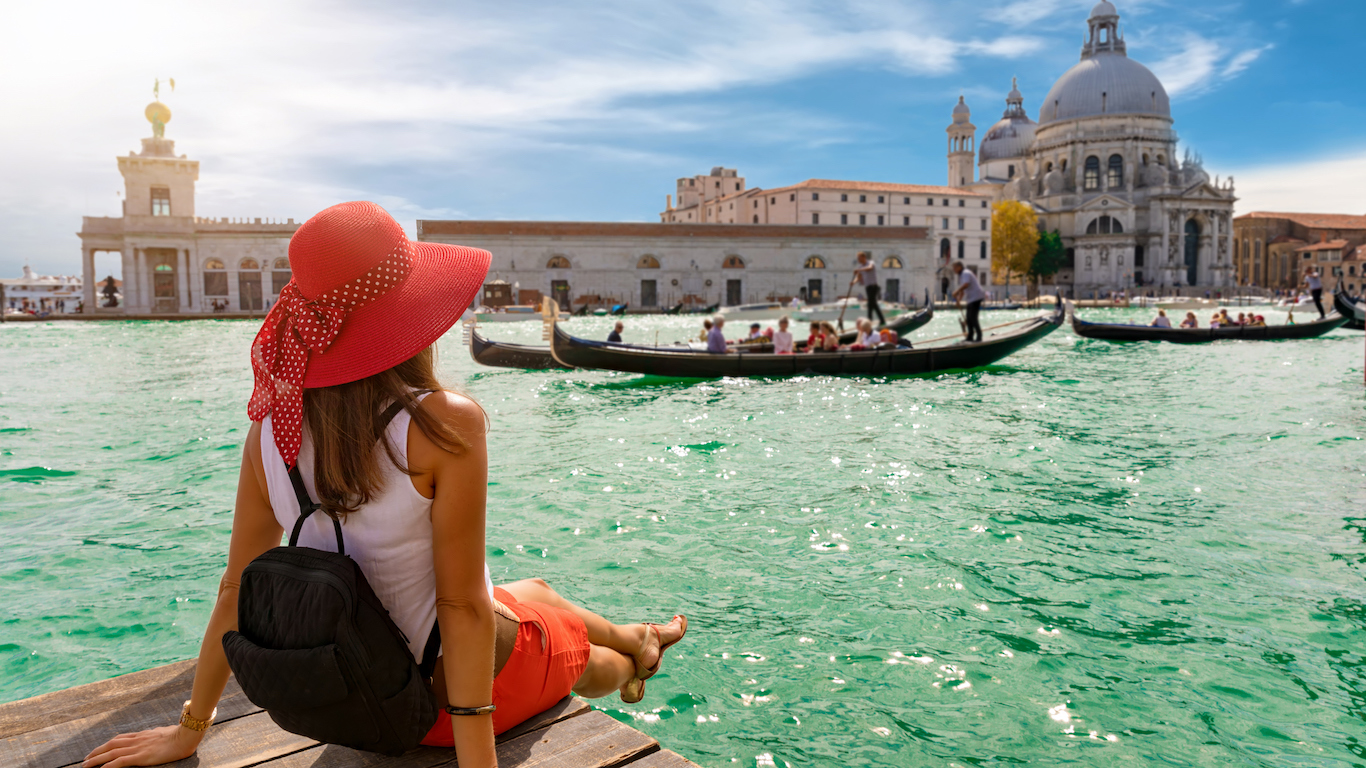 24/7 Wall St.
24/7 Wall St. 24/7 Wall St.
24/7 Wall St. 24/7 Wall St.
24/7 Wall St.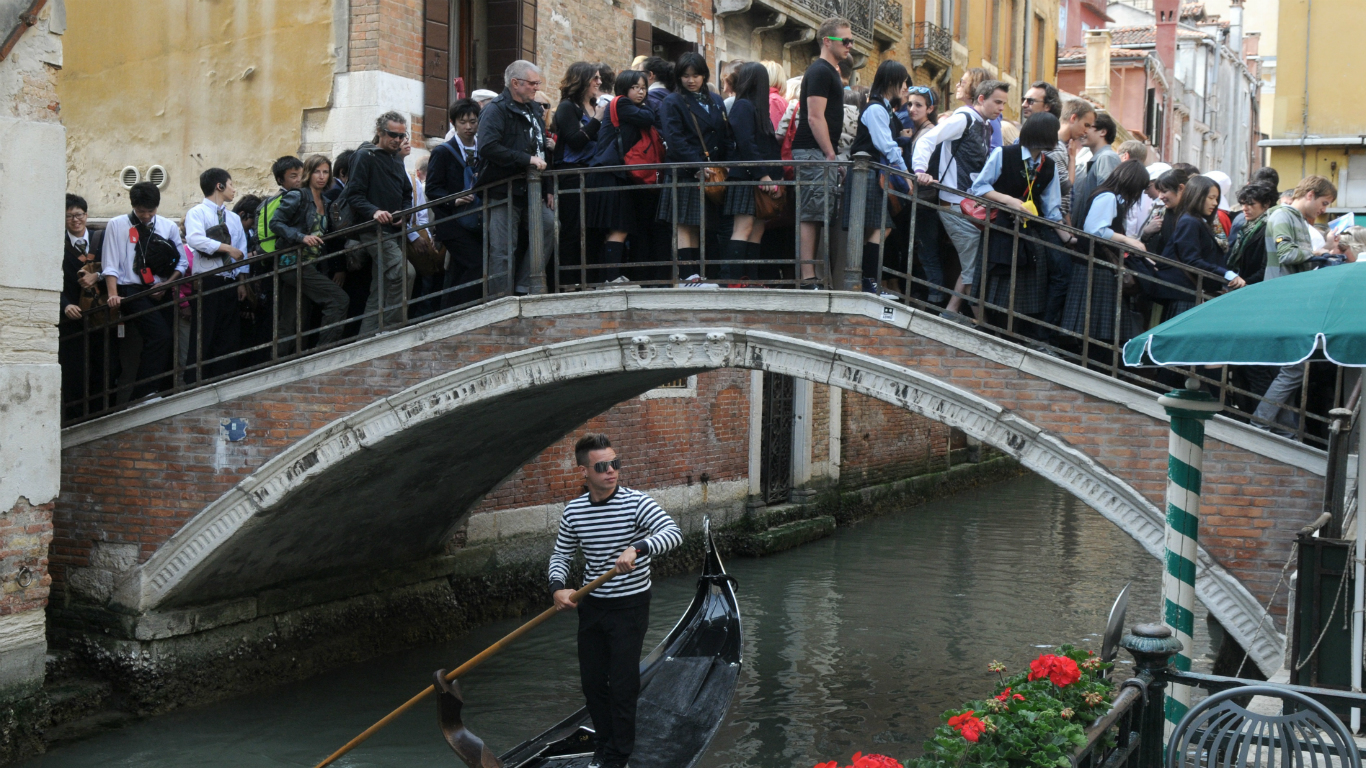 24/7 Wall St.
24/7 Wall St.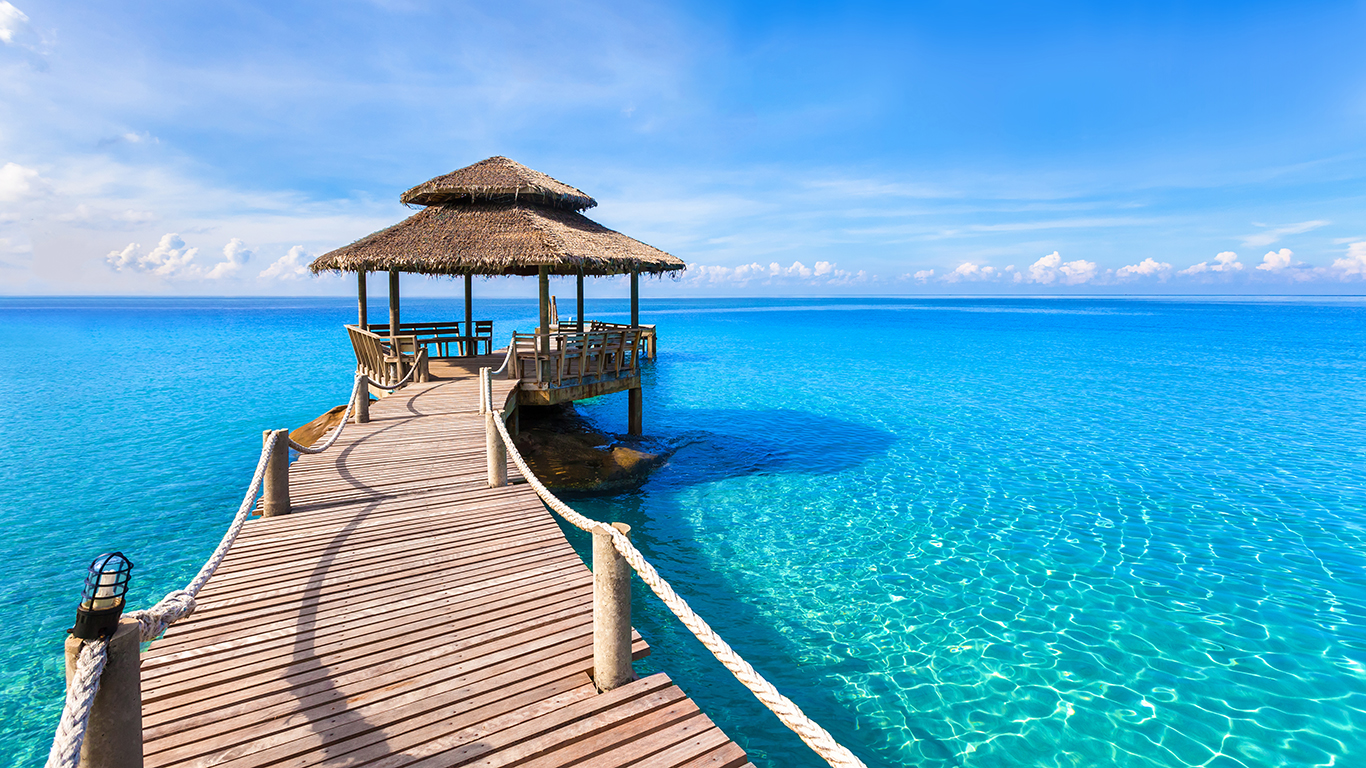 24/7 Wall St.
24/7 Wall St. 24/7 Wall St.
24/7 Wall St.



